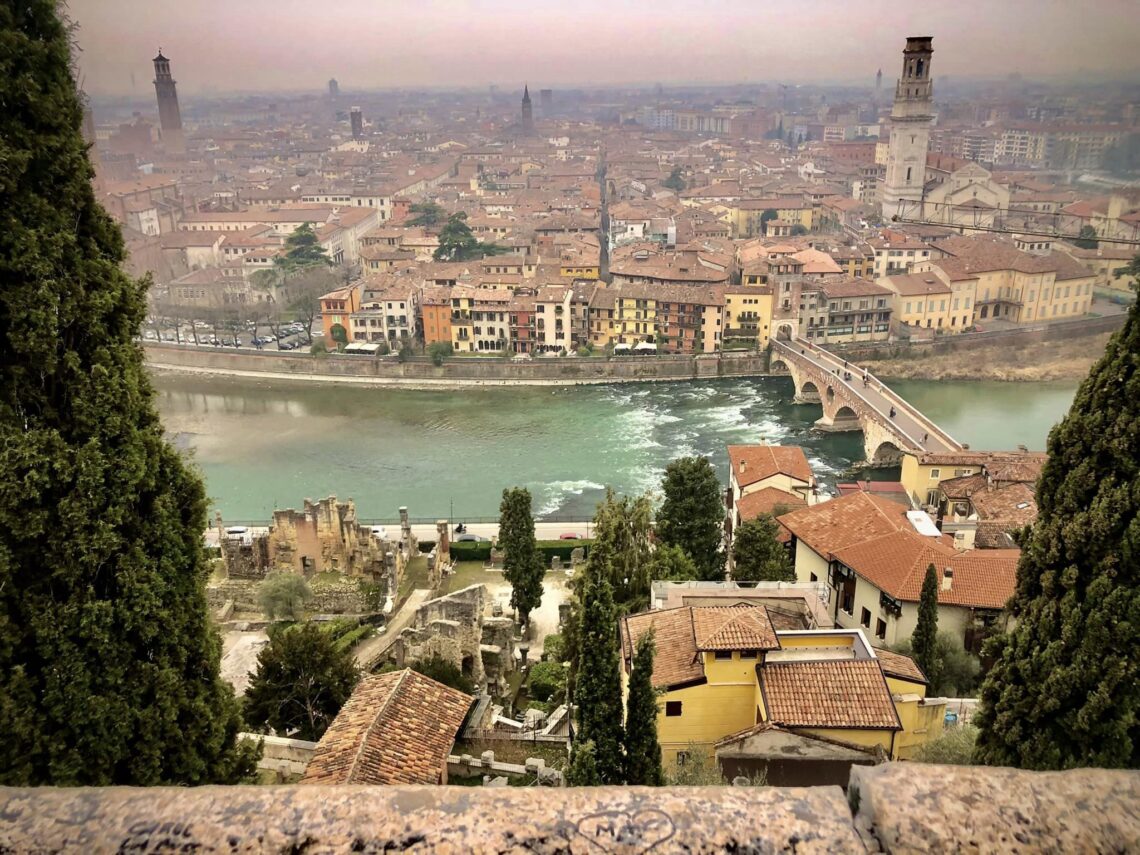
Verona Italy in Two Days
Have you been to Verona, Italy? I just got back from spending a few days in this amazing Italian city with my daughter. Now, I’d like to share with you how to enjoy Verona Italy in Two Days!
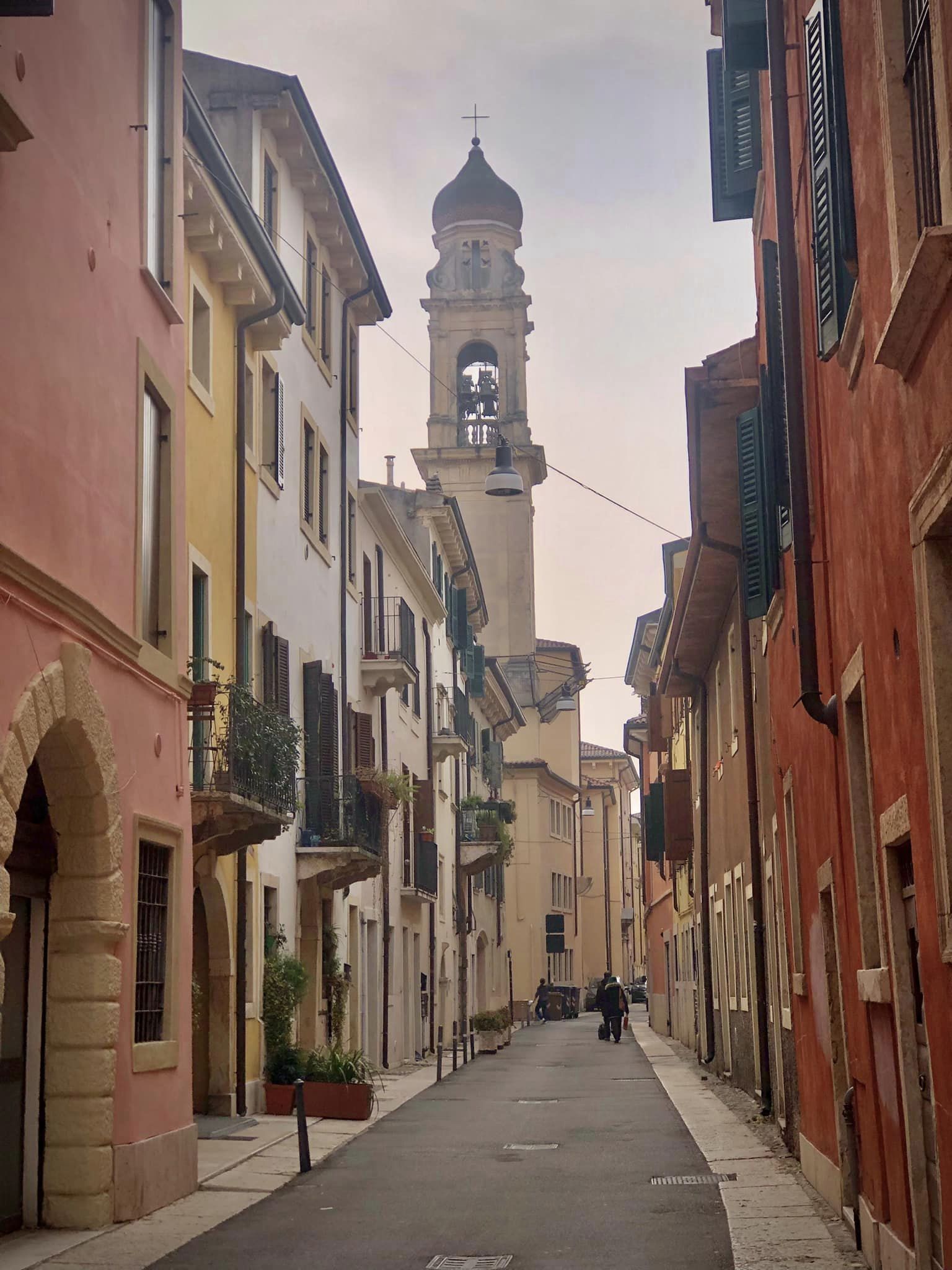
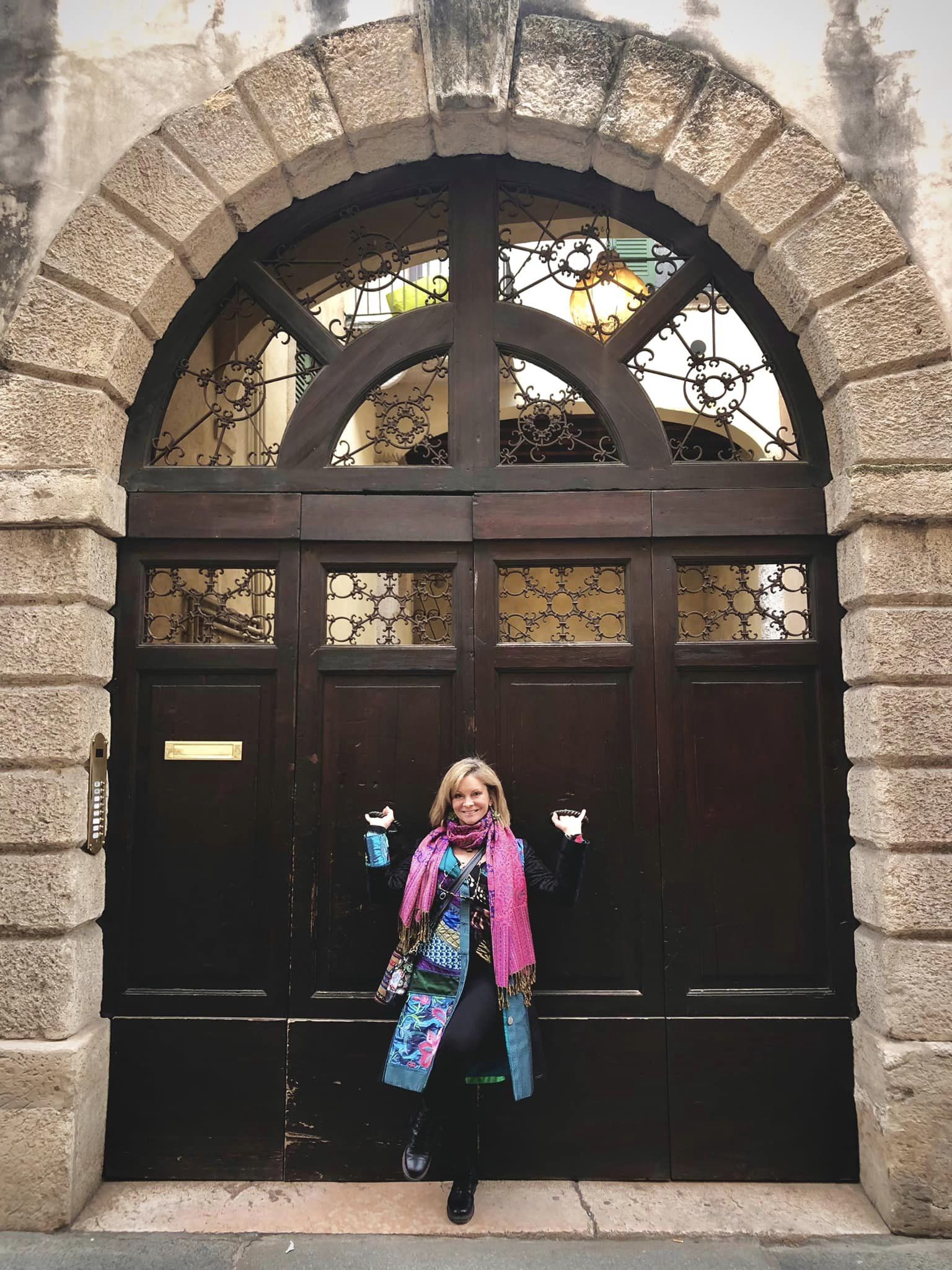
Verona is a city in the northern Veneto region of Italy, situated on the banks of the Adige River. It is well known for its rich history, beautiful architecture, and association with Shakespeare’s tragic love story of Romeo and Juliet. Shakespeare also references Verona in several other plays, such as “The Two Gentlemen of Verona” and “The Taming of the Shrew”. In these plays, Verona is depicted as a city of romance and courtly love, where the characters experience the joys and pains of falling in love.
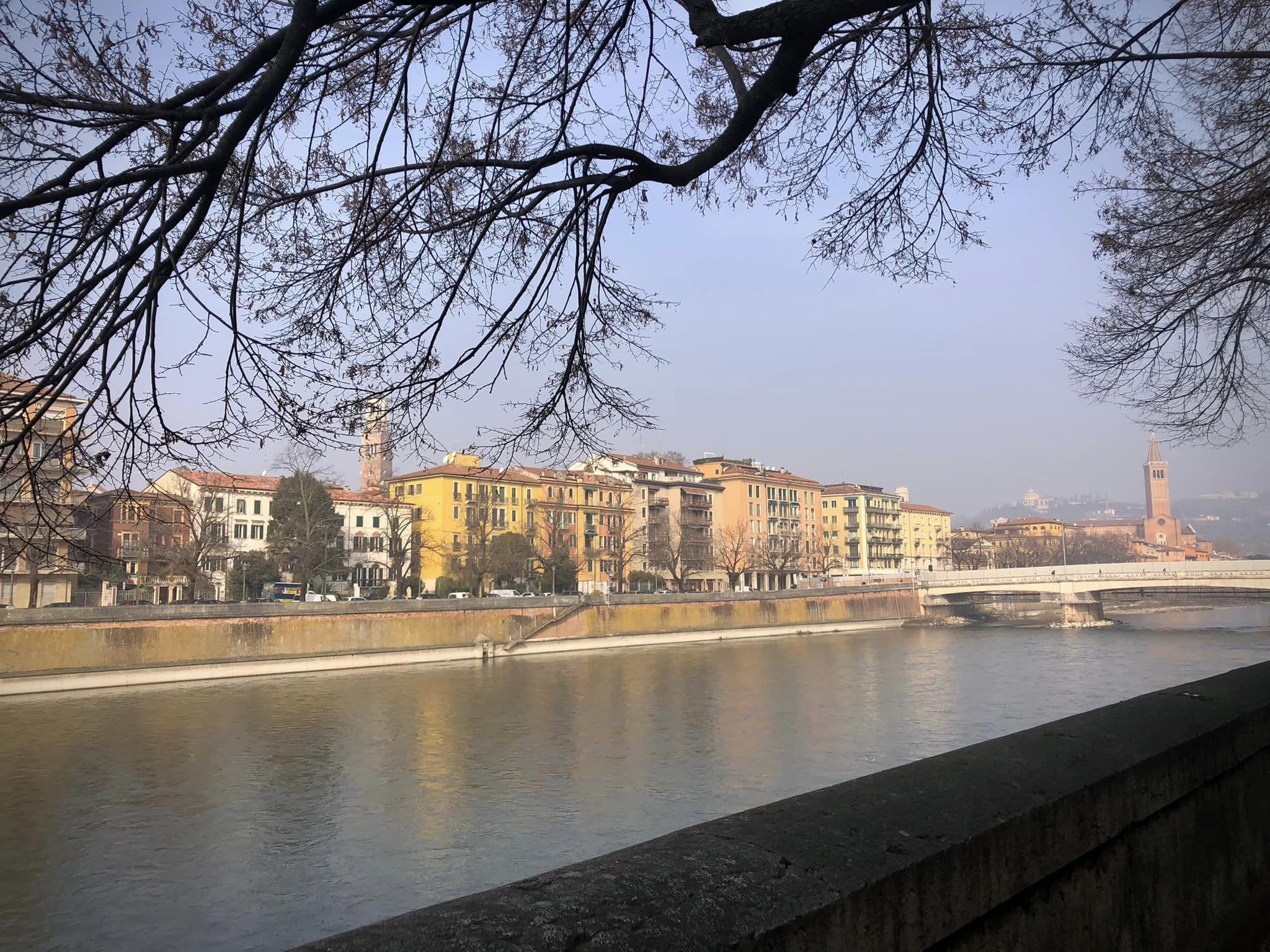
To capture the essence of this city in only two days, you’ll need to do a lot of walking. I will describe the highlights worth seeing during a two-day visit. If you like museums, you could definitely spend more days visiting Verona. Even in the winter months (I was there in February), you can enjoy this colorful and scenic city.
Juliet’s House
One of Verona’s most famous attractions is the Casa di Giulietta (Juliet’s House), a 14th-century building that is believed to have inspired Shakespeare’s story of Romeo and Juliet. The balcony in the courtyard is where Juliet is said to have stood while Romeo declared his love.
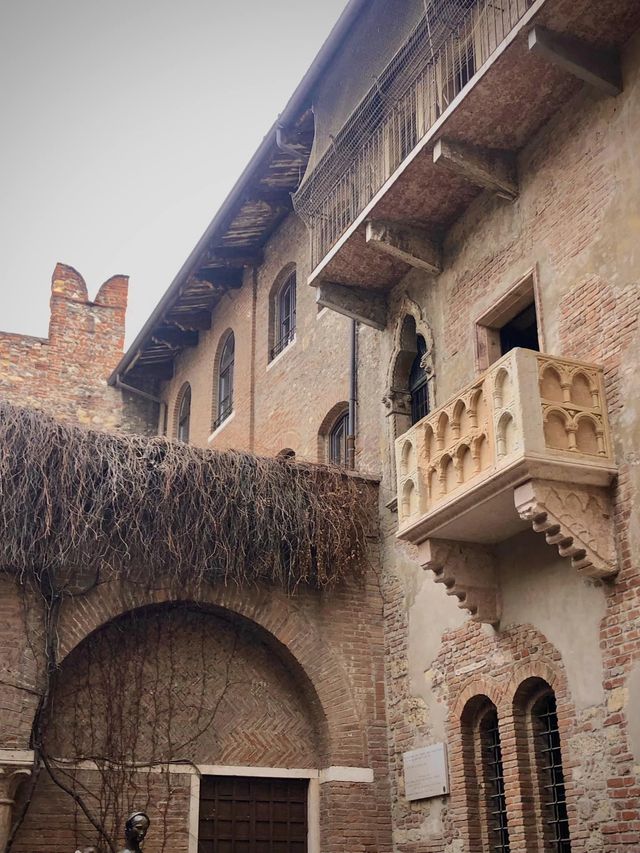
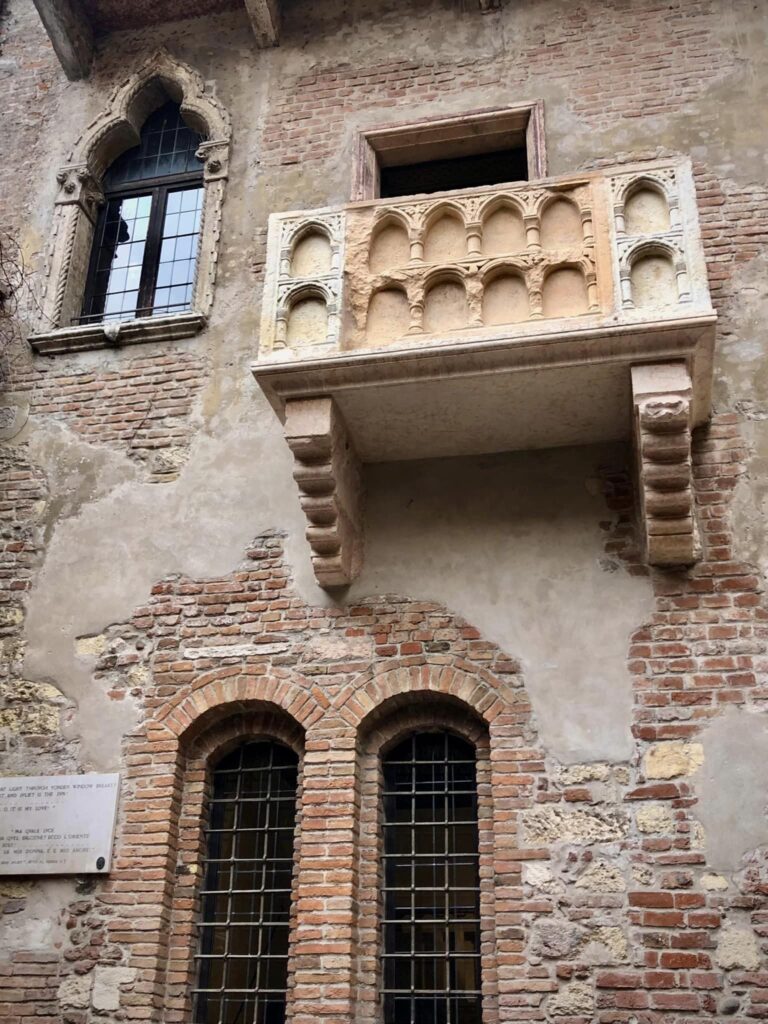
We stopped by this courtyard but didn’t care to go inside or wait in the queue to get a picture taken by the statue of Juliet.
Arena de Verona
Verona has been inhabited since Roman times and has several ancient monuments that testify to its history, such as the well-preserved Roman amphitheater, and the Arena di Verona, which is still used today for concerts and opera performances.

This amphitheater was built in the 1st century (30 AD) and originally seated 30,000 people to view gladiator fights. We walked to the top of the stone bleachers to get a better view of the interior. There are only 4 arches remaining from the initial outer wall which was destroyed in a major earthquake in 1117.
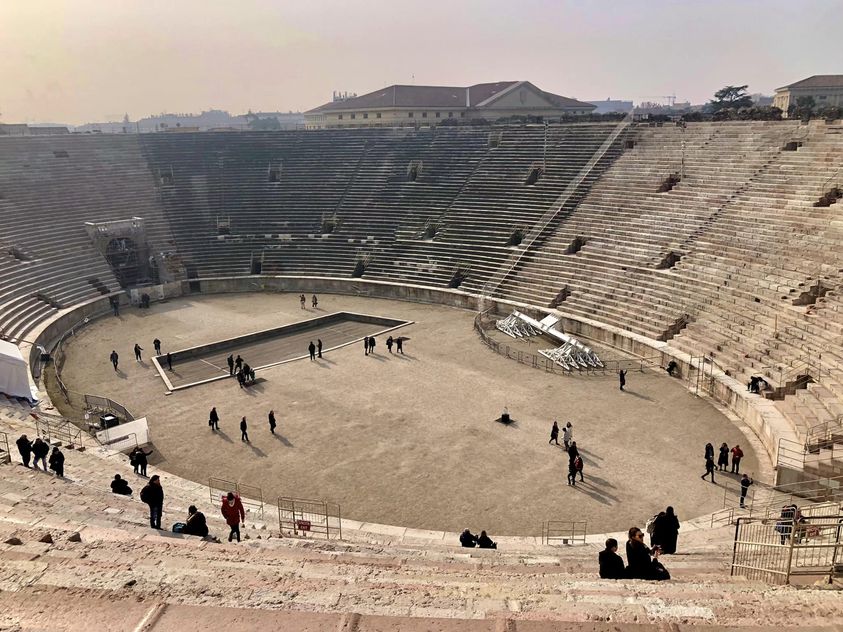
Piazza Bra
The popular Piazza Bra is next to the Arena, a popular gathering place for locals and tourists. This busy square is the largest piazza in Verona, and some claim that it is the largest in Italy. You’ll find many shops, cafes, and restaurants in Piazza Bra.
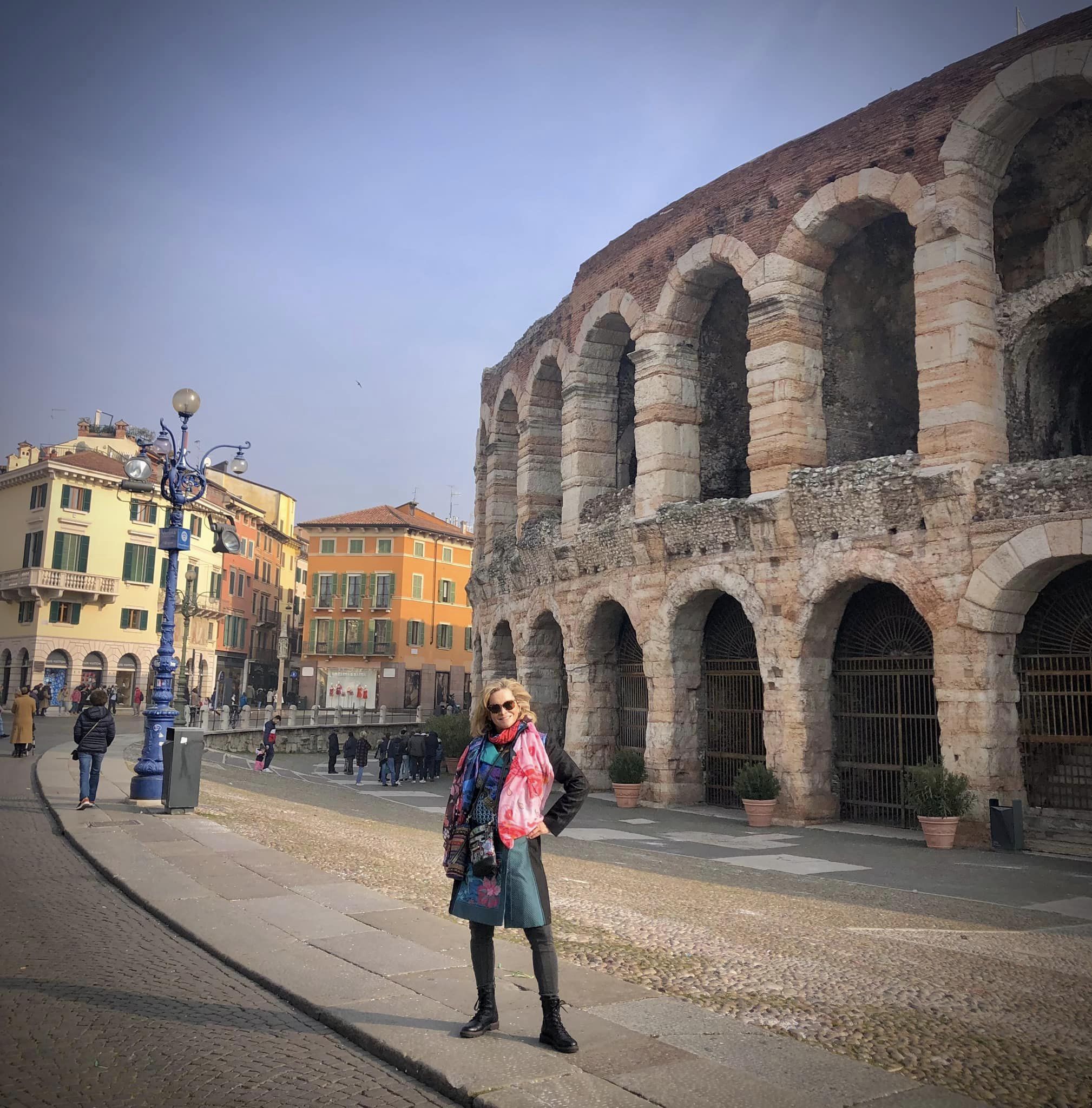
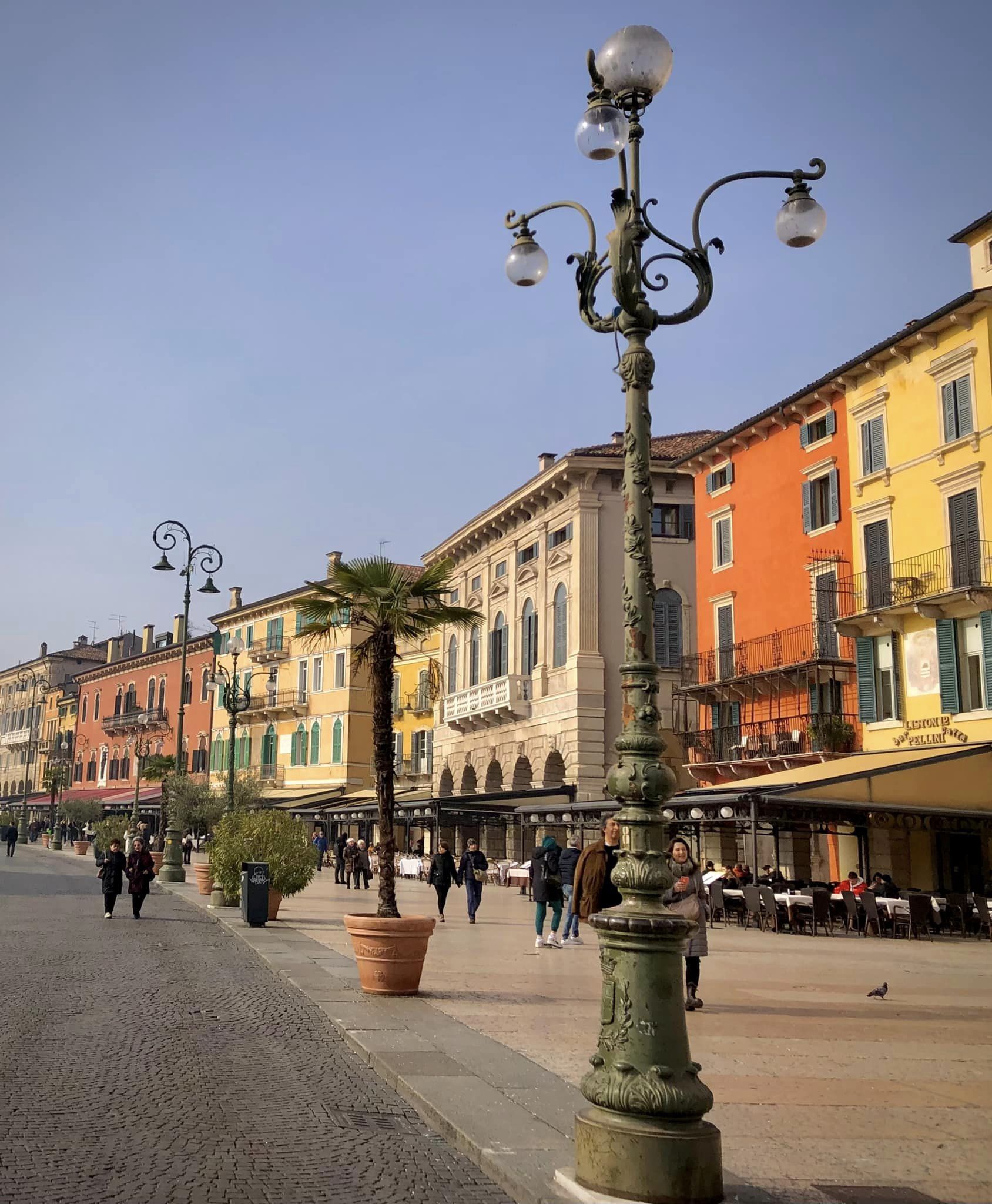
Piazza delle Erbe
Another great spot is Piazza delle Erbe, which is the city’s main square and has been the center of civic life in Verona for centuries. This bustling square is surrounded by beautiful old buildings and has an open market where you can buy fresh produce and souvenirs.
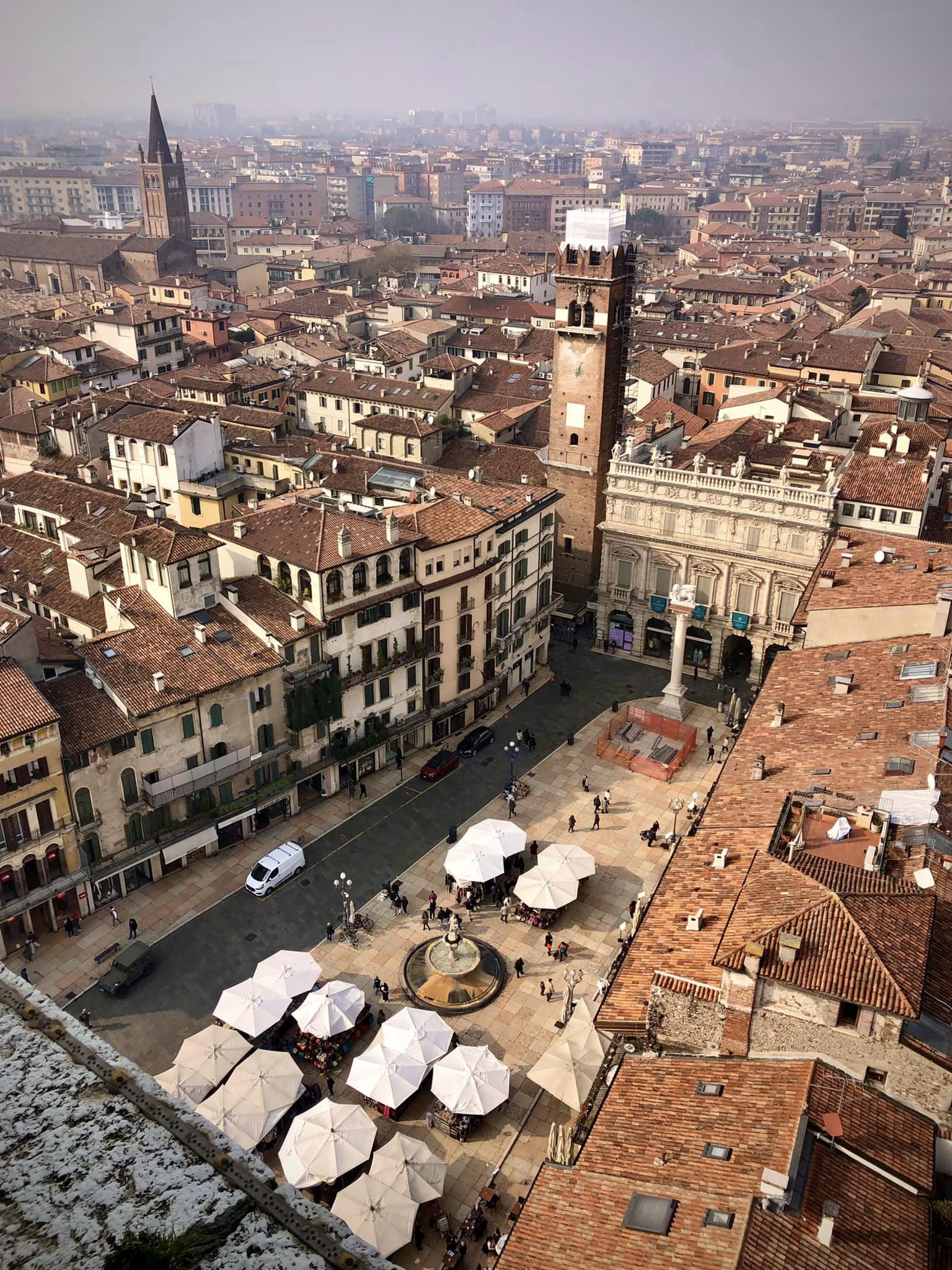
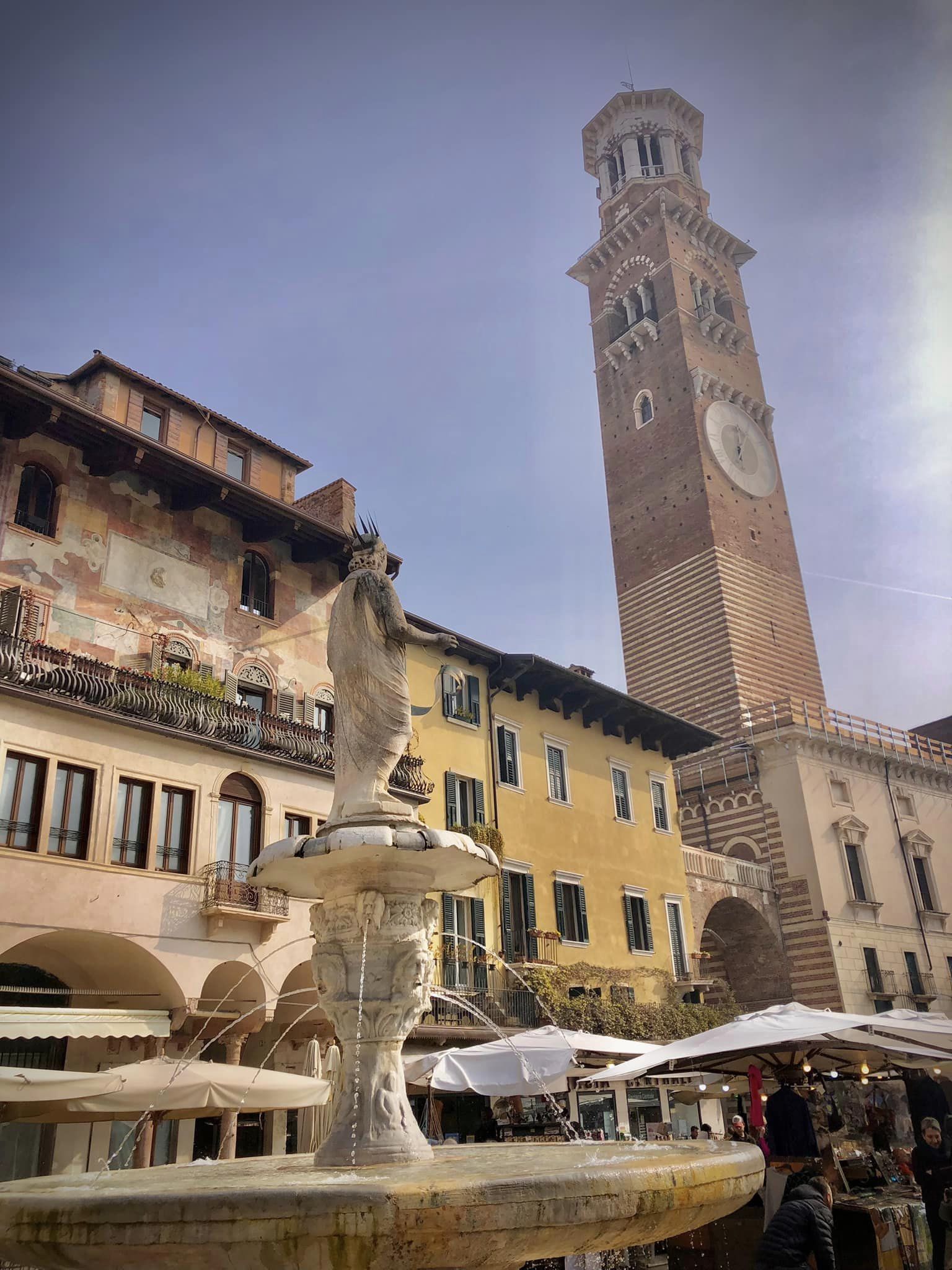
We were happy as larks sitting outside at this piazza watching the people, having cocktails, and enjoying the ambiance. I also did some shopping here to buy a colorful scarf and gloves at inexpensive prices.
Torre dei Lamberti
The Torre dei Lamberti (Lamberti Tower) is located in the Piazza delle Erbe and is perfect for great views of the city and surrounding area. The bell tower is 84 meters high and was originally built in the 12th century as a watchtower for the city’s defensive walls. In May 1403 the top of the tower was struck by lightning, but the 16-year restoration didn’t start until 1448.

You can choose to walk the tower steps to reach the top, or as we did, pay one euro extra to take the convenient elevator.
Castelvecchio
One of my favorite spots in Verano was Castelvecchio, a beautiful medieval castle built in the 14th century. It’s now home to an art museum that houses work by some of Italy’s most famous artists. The entrance ticket also allows you to see the interior walls and garden of the castle.
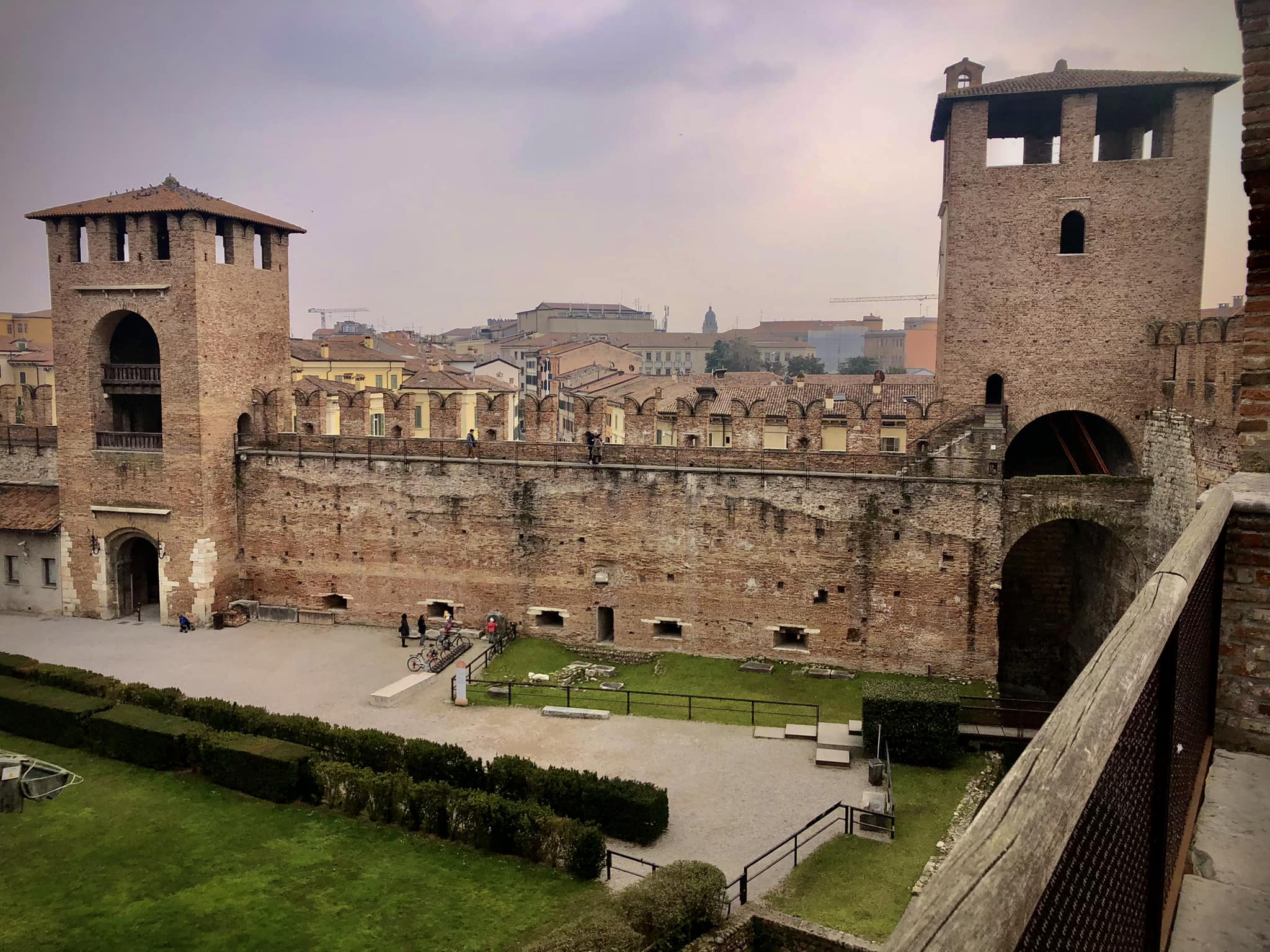
The word “Castelvecchio” means “old castle” in Italian, and the name refers to the fact that the fortress was built on the site of an earlier Roman settlement. Castelvecchio is a massive complex with a variety of different buildings and features. The main building is a large, rectangular tower that rises to a height of over 30 meters. There are also several smaller towers and a series of walls and gates that surround the fortress.
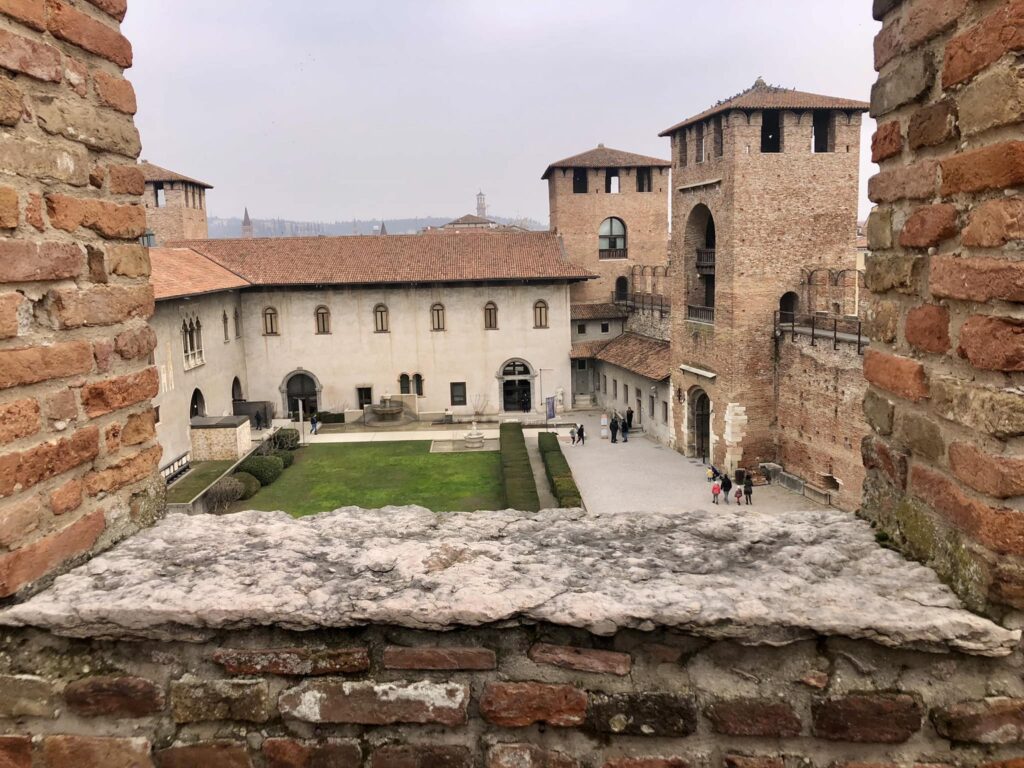
Ponte Scaligero
There are many pretty bridges in Verona but the most outstanding in my opinion is the Scaliger Bridge, also called the Castelvecchio Bridge because it’s right next to the castle. It is named after the ruling Scaliger family who commissioned its construction in the 14th century.
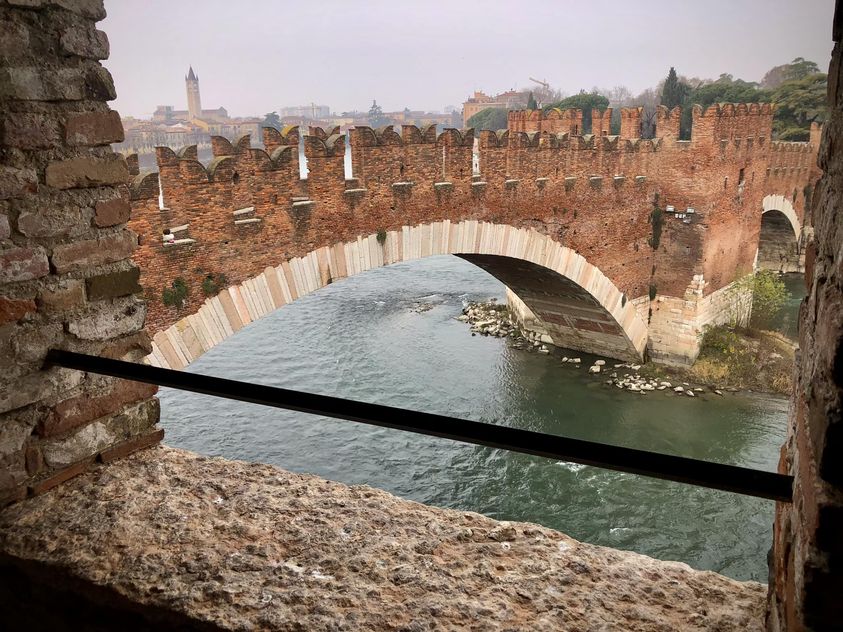
The bridge is made of red brick and features three arches. Its central arch is the largest and measures approximately 48 meters in length, making it one of the longest arches in Europe at the time of its construction. The two smaller arches on either side of the central arch were used for pedestrian traffic.
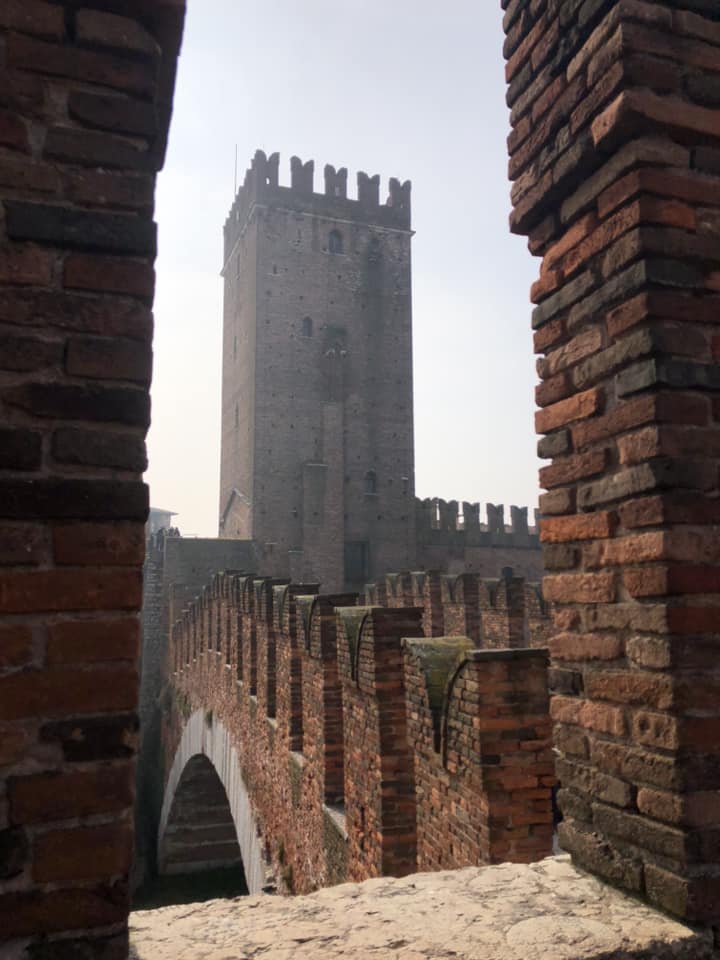
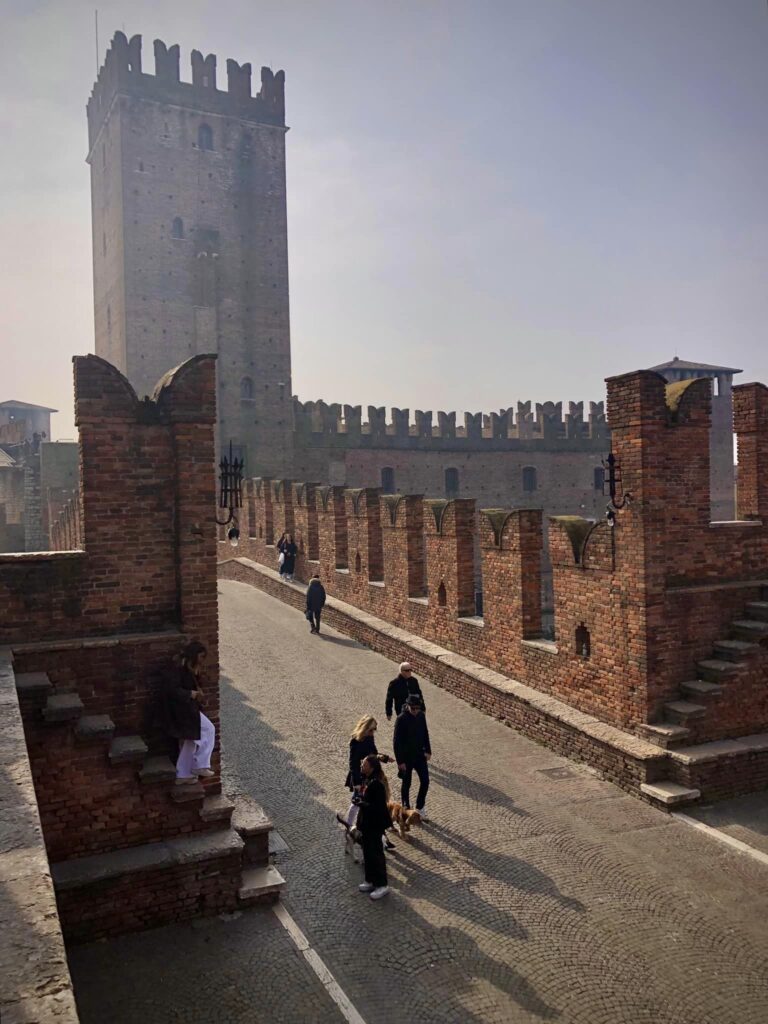
The Scaliger Bridge was built to be both functional and defensive, with fortified towers at each end used to defend the city from potential invaders. Its towers were also used as prisons and torture chambers during the rule of the Scaliger family.
Scaliger Tombs
The Scaliger Tombs is a group of Gothic funerary monuments celebrating the Scaliger family, who ruled in Verona from the 13th to late 14th century. There are five tombs in total, each dedicated to a different member of the family.

The tombs are considered to be some of the most important examples of Gothic art in Italy. The tombs are characterized by their intricate carvings and decorations, which include statues, reliefs, and ornate inscriptions.
Castel San Pietro and Ponte Pietra
Castel San Pietro
One of the highlights during our two days was walking up to the Castel San Pietro to see the birdseye view of the city. We were hoping to see a sunset from there but it was too cloudy. We enjoyed just sitting on the castle wall and watching the city light up at nightfall.

The castle is situated on the San Pietro hill, which is about 300 meters above sea level and provides breathtaking views of Verona and the surrounding landscape.
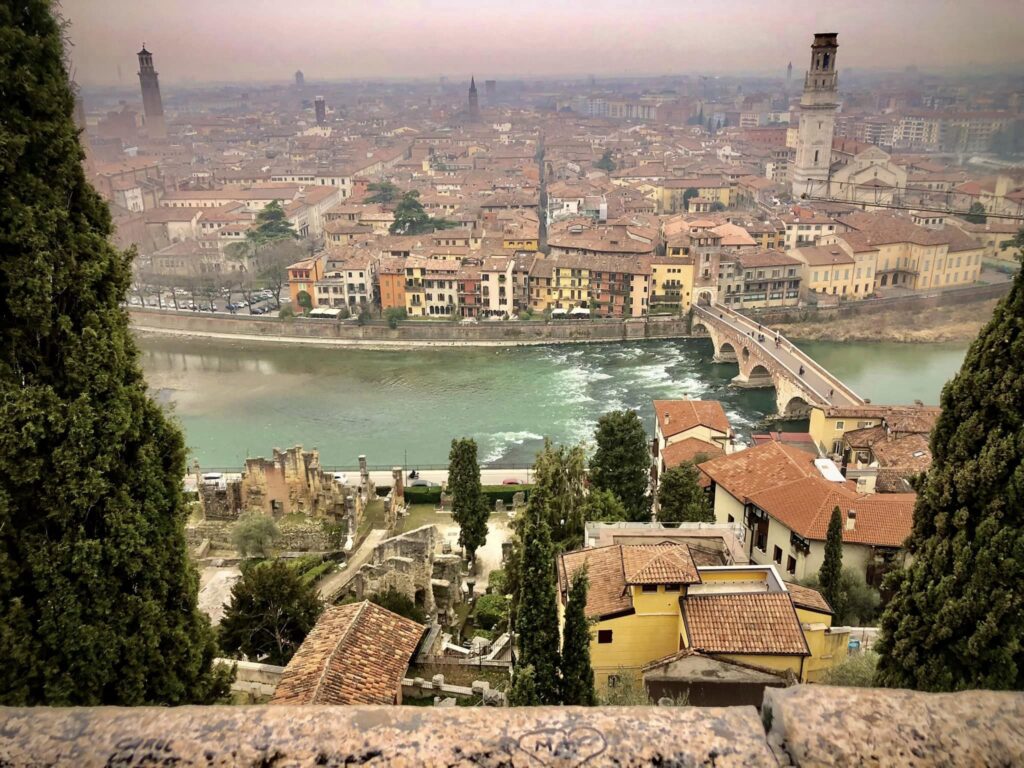
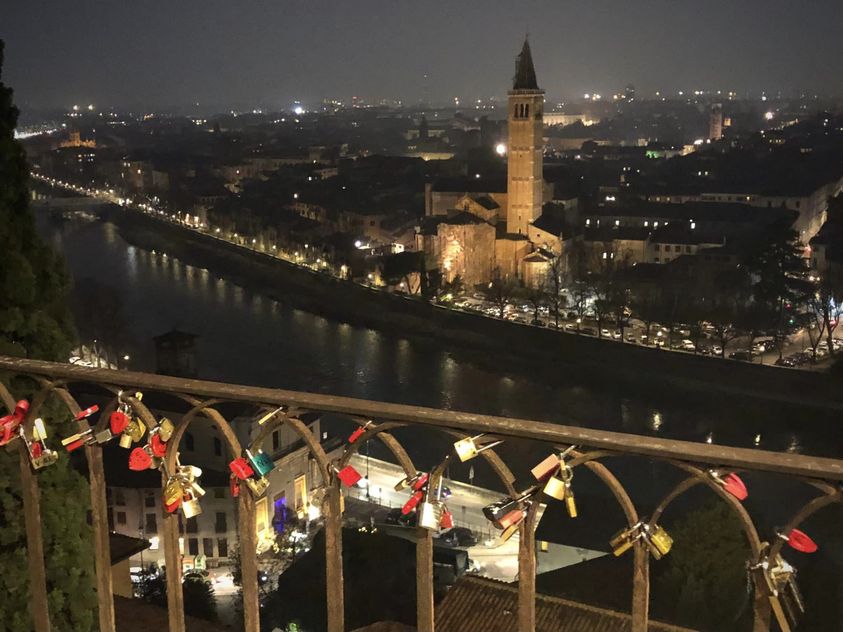
The castle was built in the 14th century and has a rich history. It was used by the ruling Scaligeri family as a strategic military stronghold during the medieval period. Later, during the Renaissance, the castle was converted into a luxury residence for the nobility. We didn’t go inside the castle but just wanted to see the outside and the view from there.
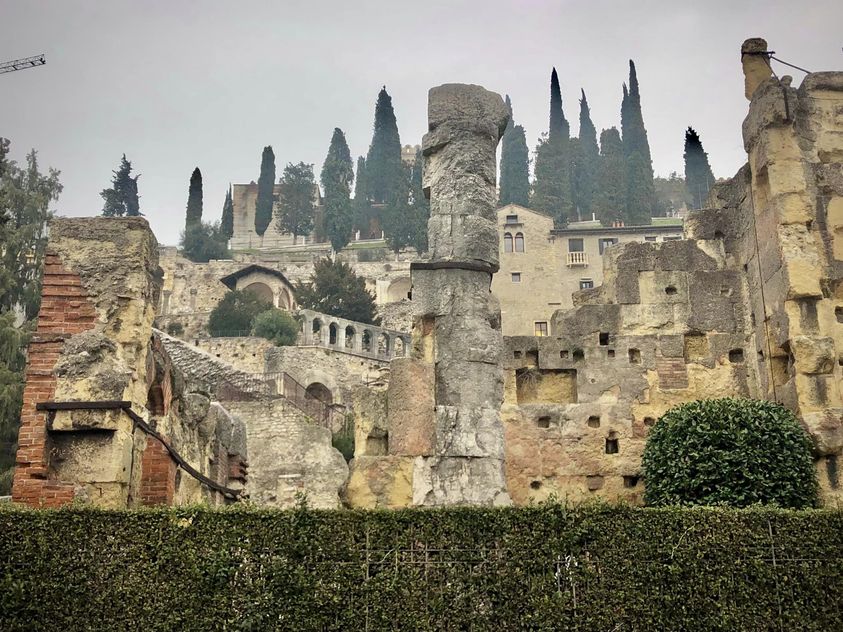
Ponte Pietra
The Ponte Pietra bridge, just below the castle, spans the Adige River and connects the historical center of Verona with the eastern part of the city. The bridge is one of the oldest and most iconic structures in Verona, with a history that dates back to Roman times. The bridge was partially destroyed by retreating German troops during World War II, but it was subsequently rebuilt and restored to its former glory.
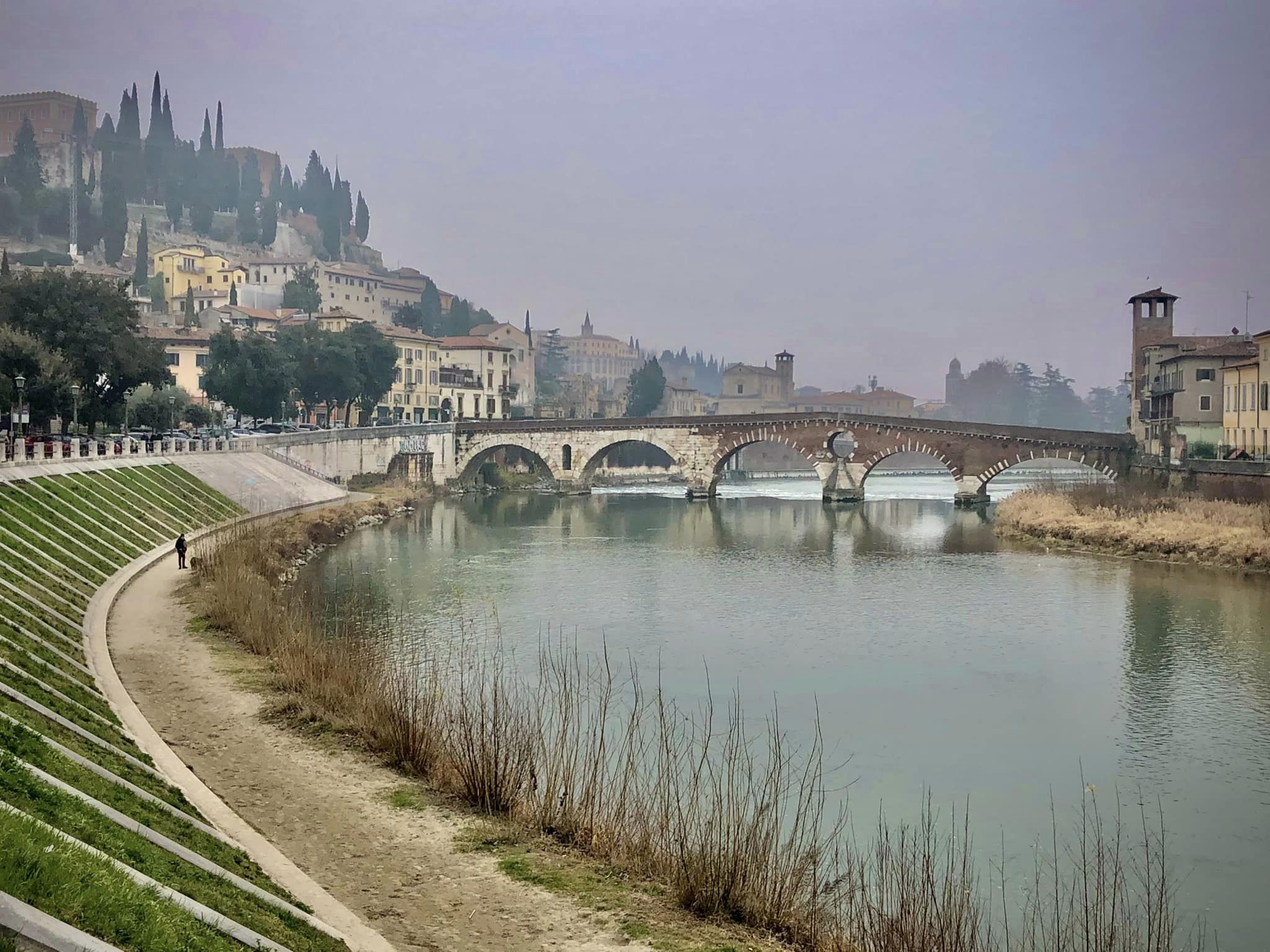
Churches
I absolutely love going inside European churches to marvel at the architecture and intricate details. I was on a mission to visit the four most popular churches in Verona. You will see them below.
Basilica Di Santa Anastasia
My favorite of all the churches we visited, this one was enormous and very ornate. This Gothic-style church was built in the 13th century and features stunning stained glass windows. It features a mix of architectural styles, including Gothic, Romanesque, and Renaissance, which reflect the different periods of its construction.
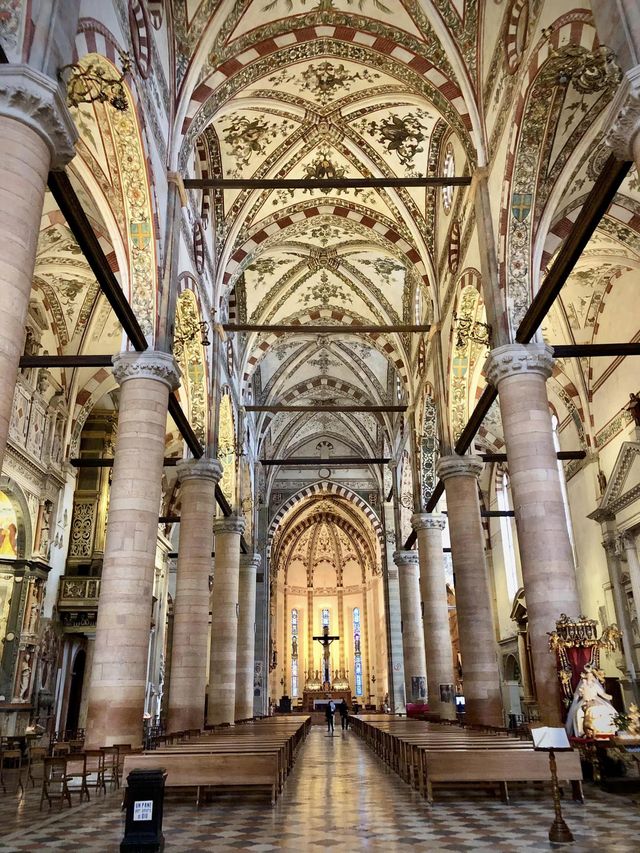
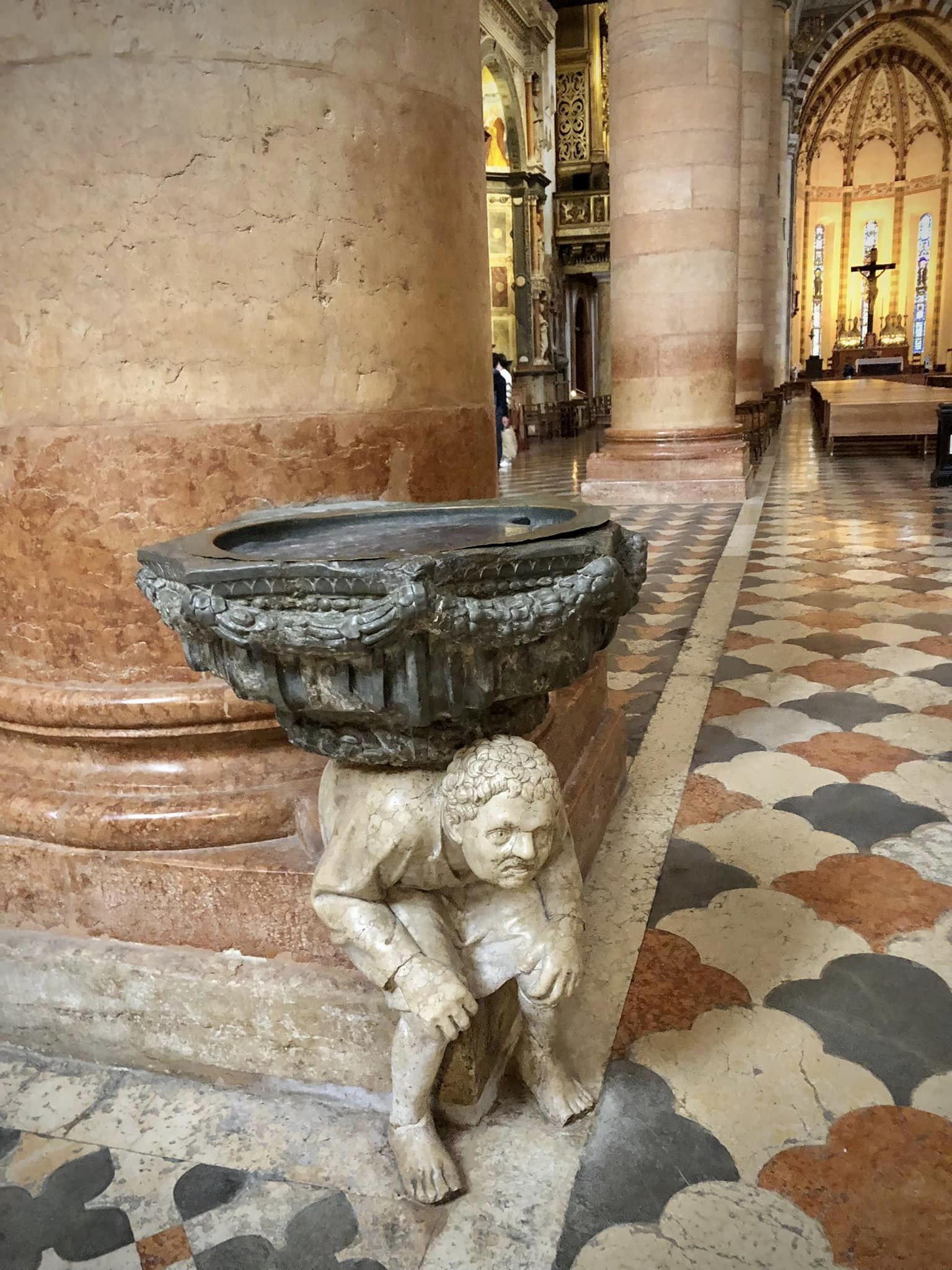
Duomo di Verona
The Duomo is the main cathedral of Verona and is located in the heart of the city. The church was built in the 12th century and features a mix of Romanesque and Gothic architecture. When we visited, they were having a service so I could only see the interior from the back of the church.
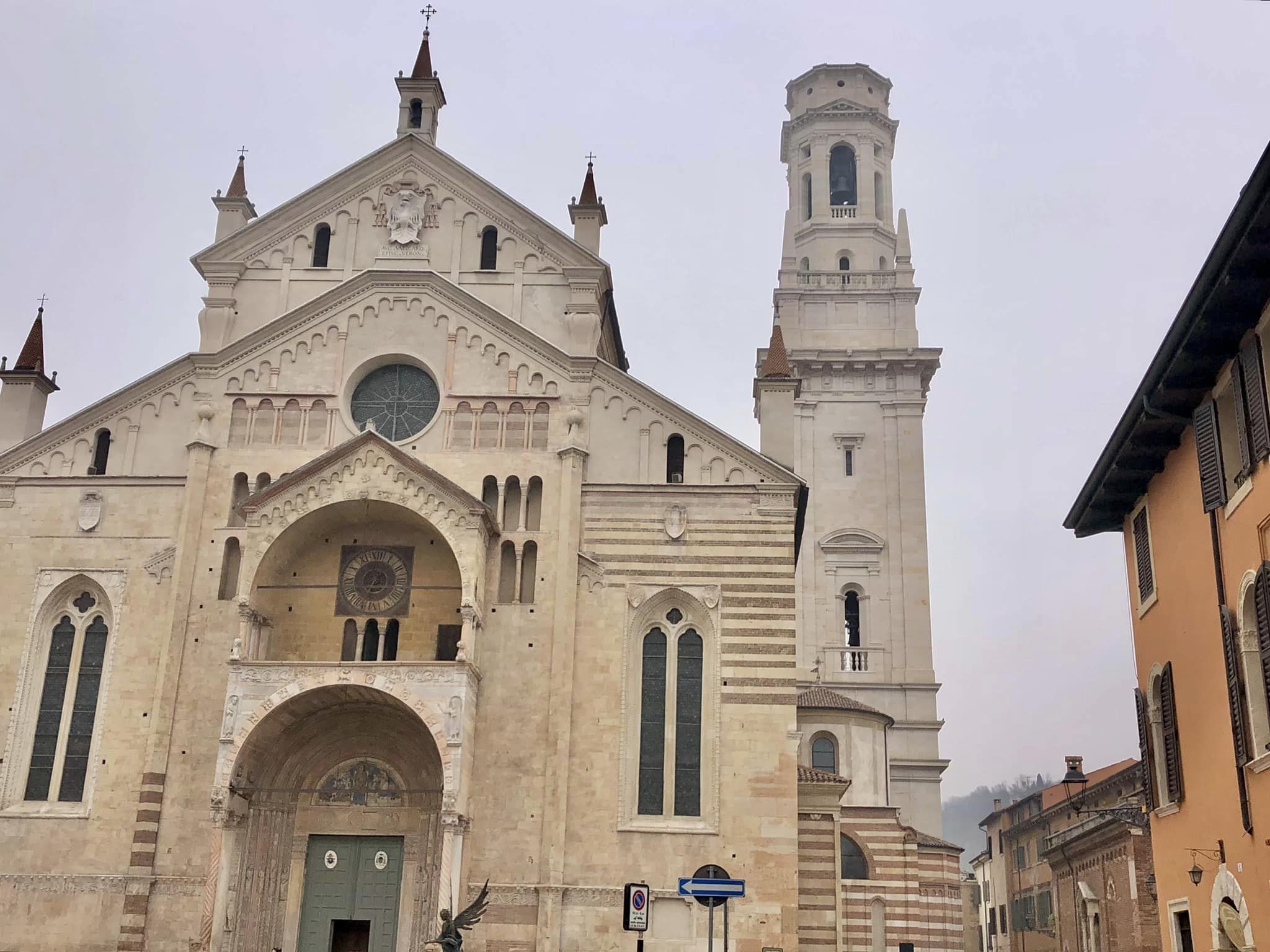
Chiesa di San Fermo Maggiore
This church is located in the historic center of Verona and is known for its unique architectural style, which combines two separate churches that were built in different periods. The bottom church is Roman, built between 1065 and 1143, and the top one is Gothic constructed in 1313. One of the highlights is the wooden ship’s keel ceiling of the upper church.

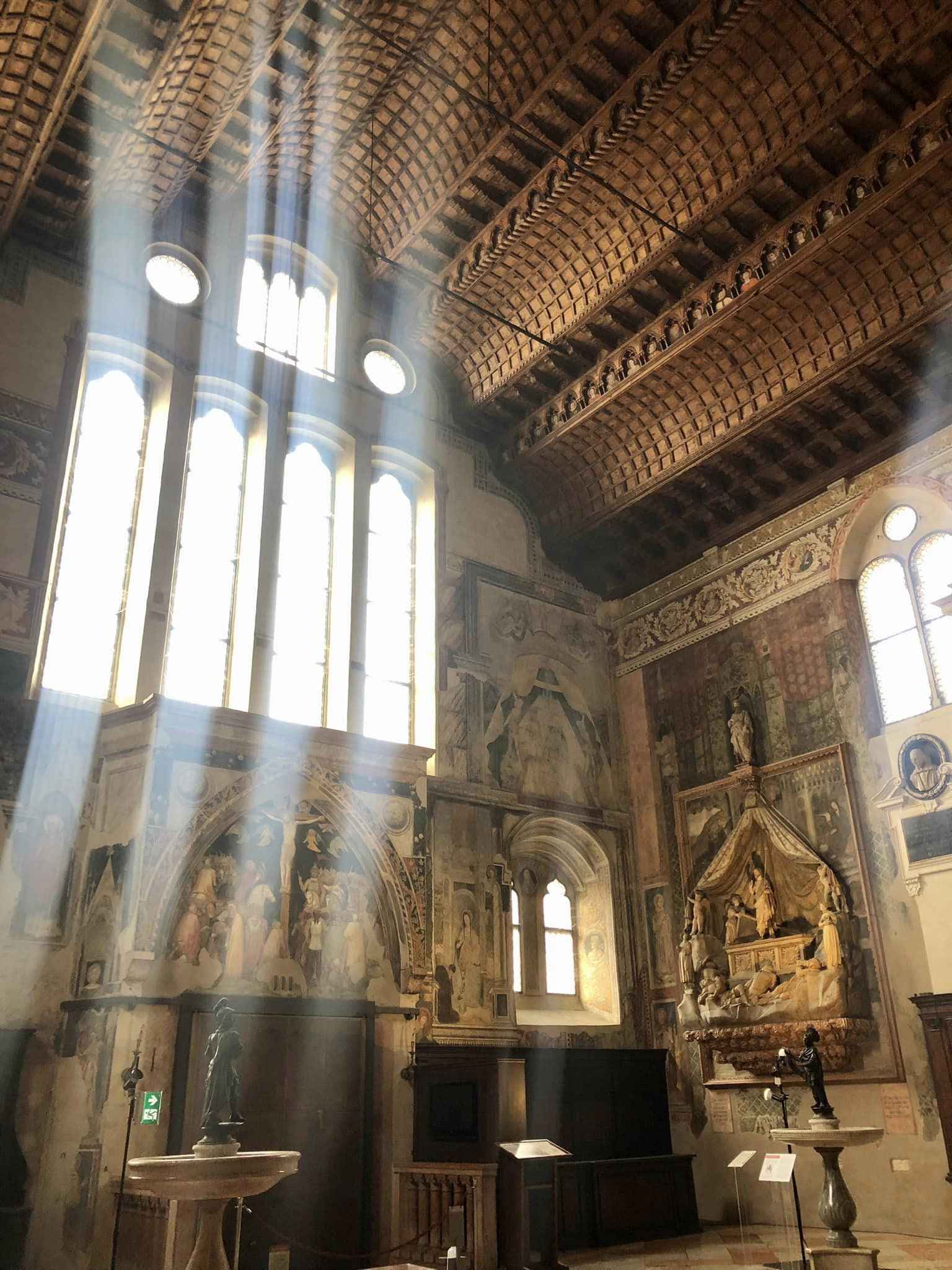
Basilica di San Zeno Maggiore
This Romanesque-style church is one of the most famous landmarks in Verona. It was built between 967 and 1398 AD and is dedicated to Saint Zeno, the patron saint of Verona. The church features a beautiful rose window, a Gothic-style cloister, and several frescoes and sculptures. This church is a bit outside the main city center but worth the stroll along the river to check it out.
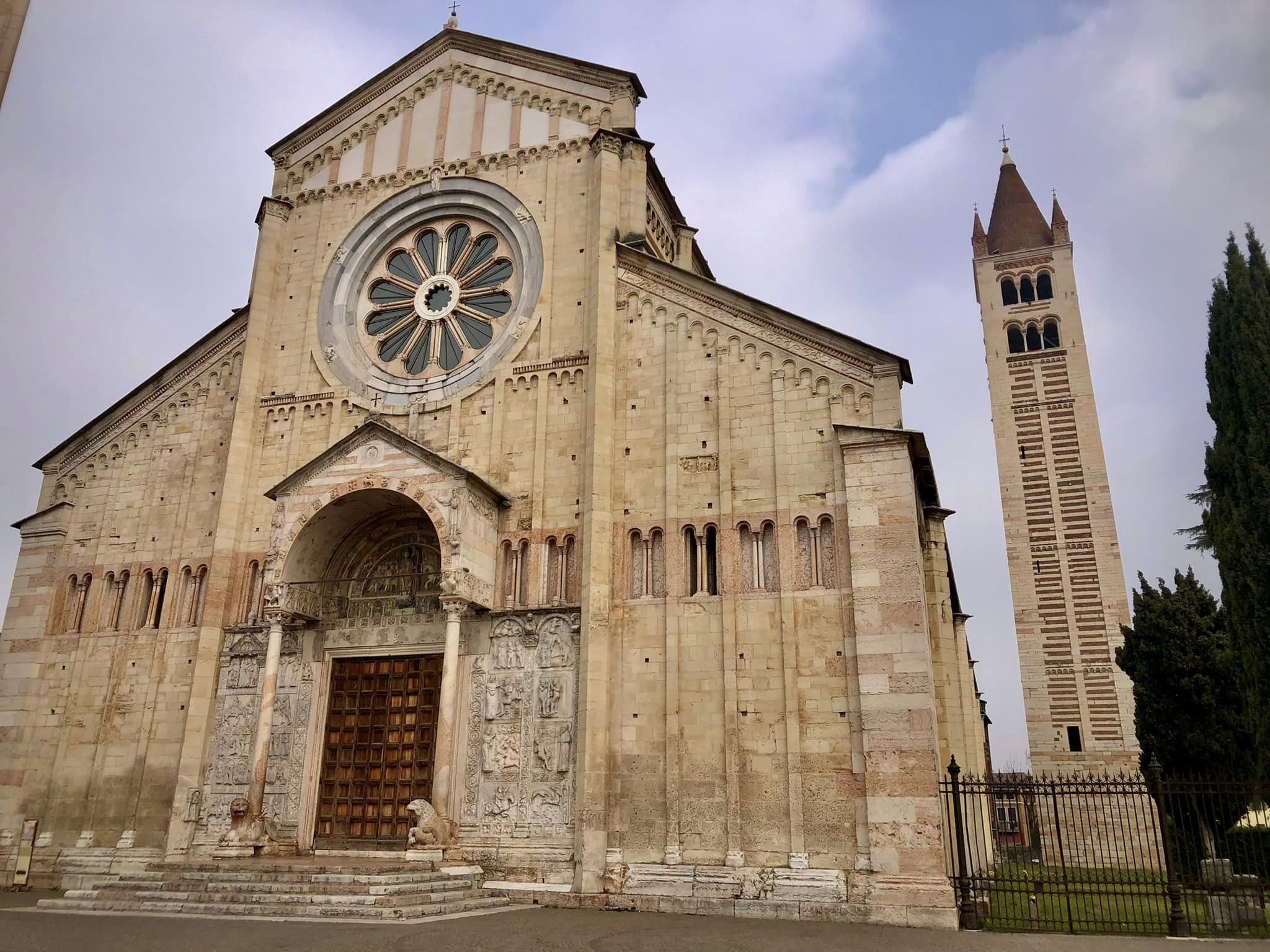
Giardino Giusti
On our final morning, we walked to see the famous garden and visited the 16th-century luxurious apartment where the famous Giusti family lived.
Giardino Giusti is a beautiful Renaissance-era garden located in the heart of Verona, Italy. The garden is known for its intricate design, which includes terraced landscapes, manicured hedges, fountains, and a variety of sculptures.
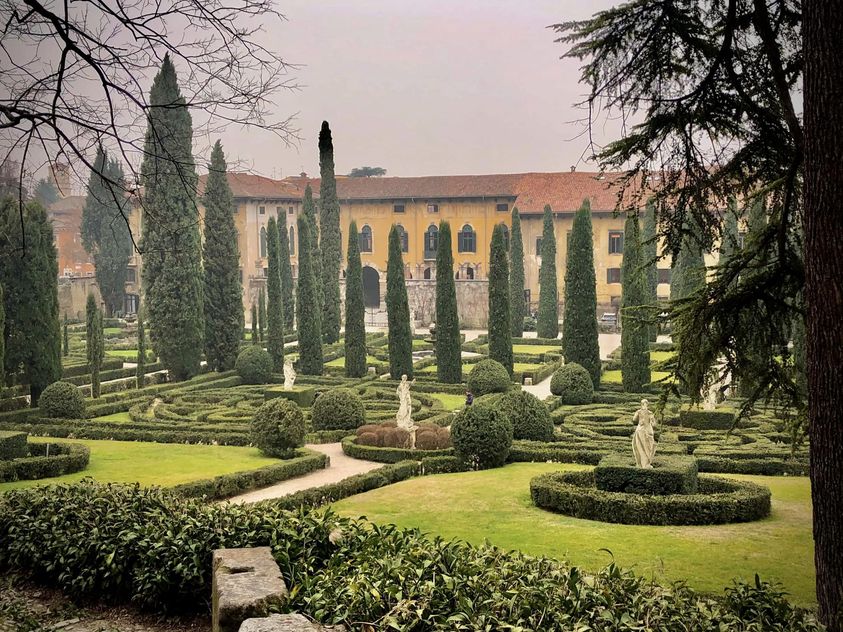
We walked all over the property and got many great views of the gardens and city. It was very peaceful and pretty, even in winter. After spending an hour in the park, we entered the apartment that belonged to the Giusti family, who were the original creators of the Giardino Giusti. The entrance fee included the park and the apartment.

Food and Drink
Verona is known for its rich culinary traditions and excellent wines. The region is home to a variety of local dishes and ingredients, many of which have been passed down through generations of families. The city is surrounded by vineyards that produce some of Italy’s finest wines, such as the Valpolicella and the Bardolino.
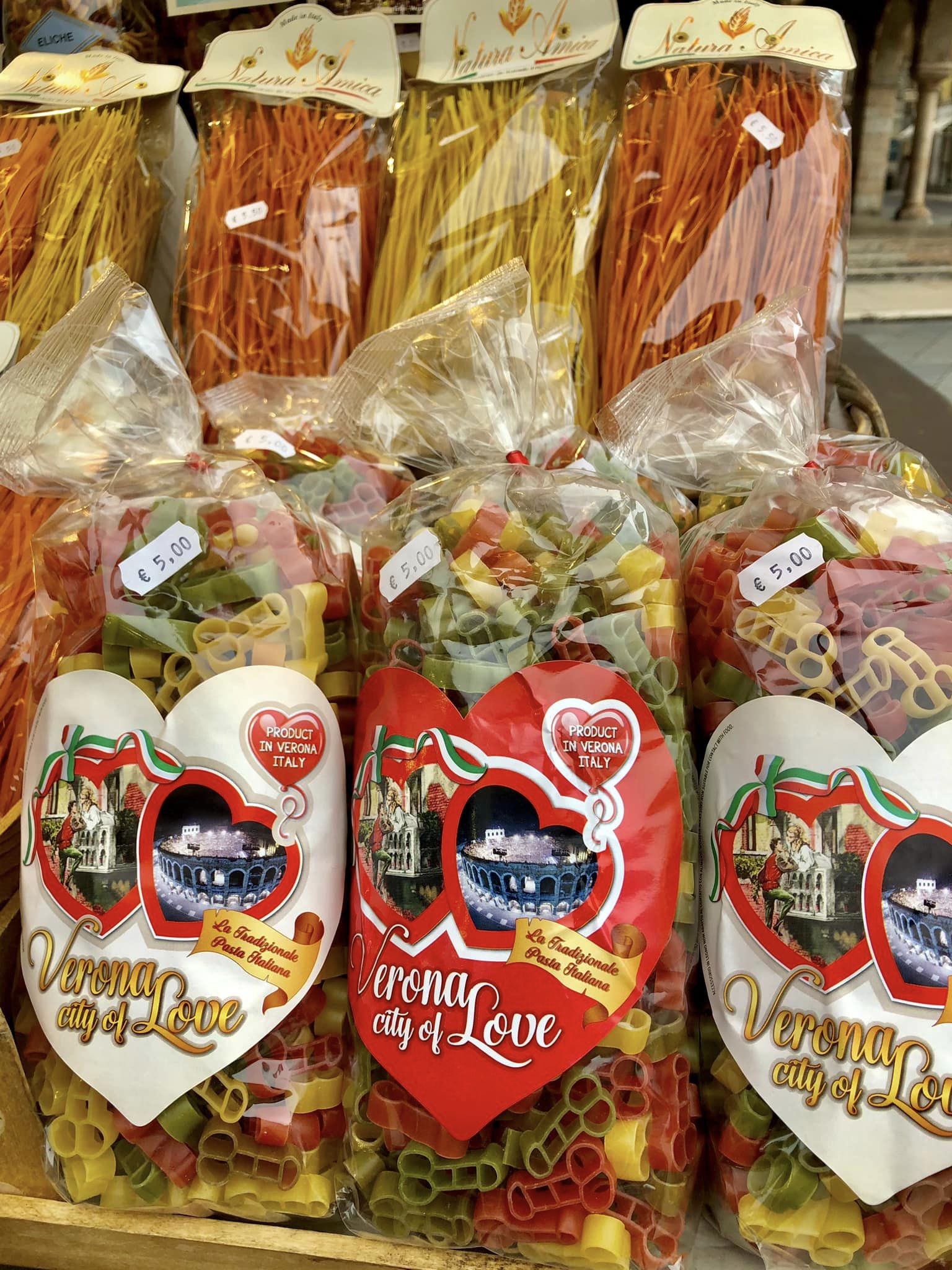
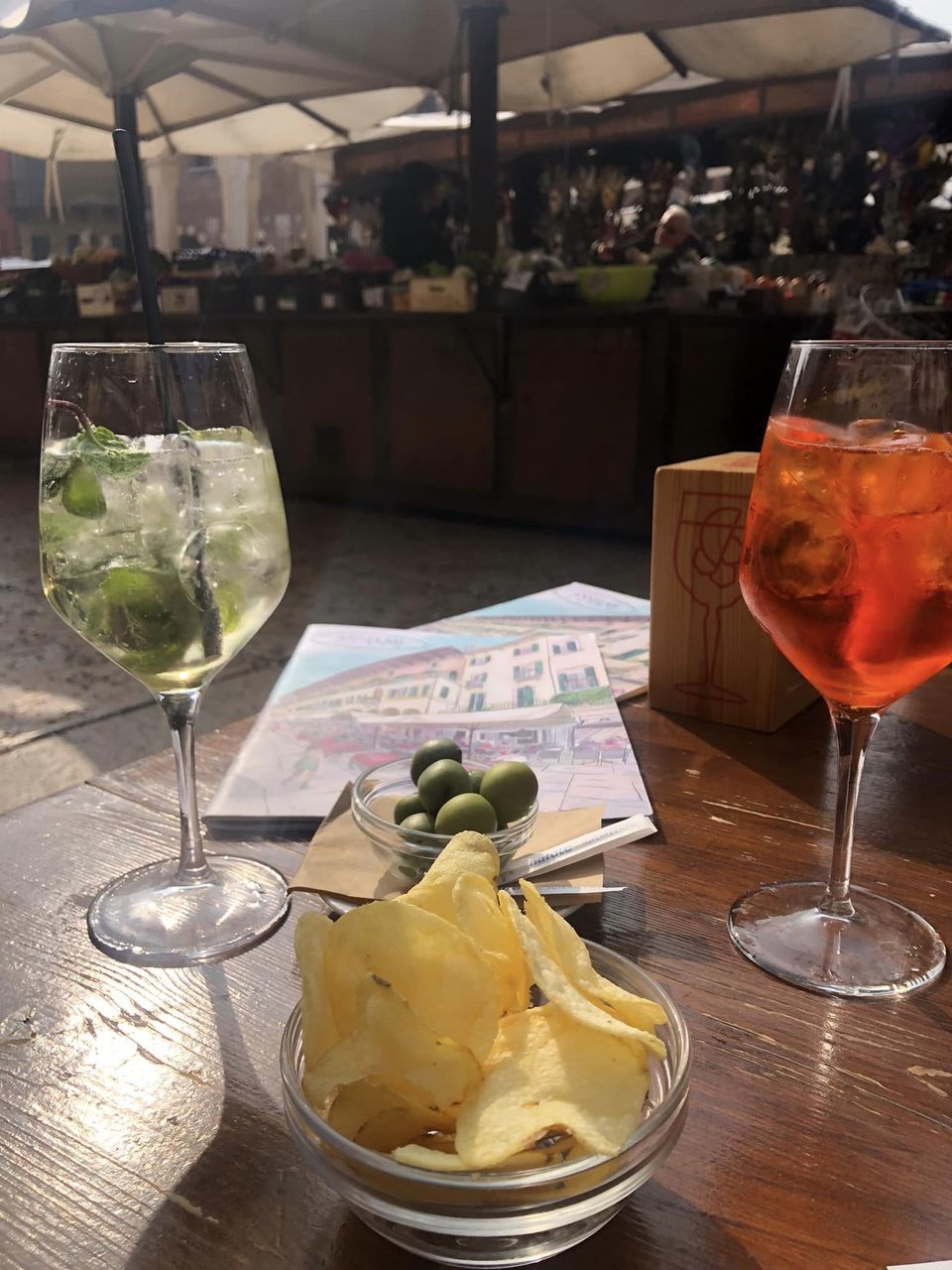
Below are a few recommendations of restaurants we appreciated during our visit.
I had read about this cute bar by the river and wanted to check it out. We got lucky to get a table outside with a gorgeous view of Castel San Pietro. We ordered some cocktails and they brought out many appetizers with them. We noticed that they do that everywhere in Verona, providing free appetizer food when you order drinks.
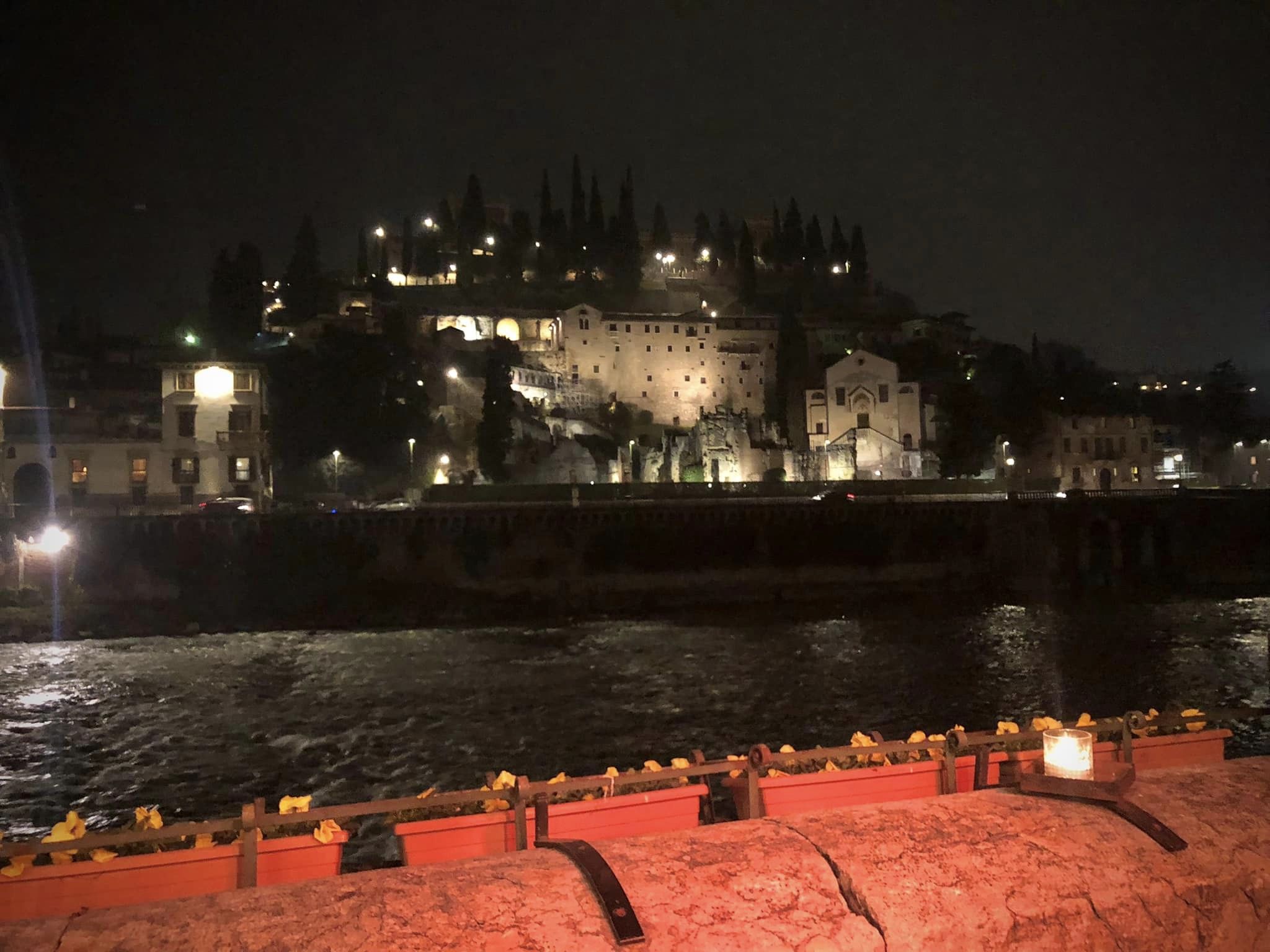
Osteria Ristorante Ponte Pietra
This restaurant came recommended by a friend who had been there. I reserved online before our trip to have one of the three tables situated on an enclosed terrace overlooking the river and the Castel San Pietra. The service and food were excellent!
If you feel like splurging for a Michelin-star restaurant in Verona, you must go to Ristorante Il Desco. We felt like queens in this elegant dining room with nice art and a relaxed atmosphere. The menu at this restaurant is not À la carte but offers a minimum 3-course meal. Everyone at the table must choose the same dishes from the menu list. You can have as many courses as you want and they will size the portions accordingly. We ordered the wine pairing option with our 3-course meal. The service was exceptional and each dish was divine. You’ll love this exquisite dining experience!
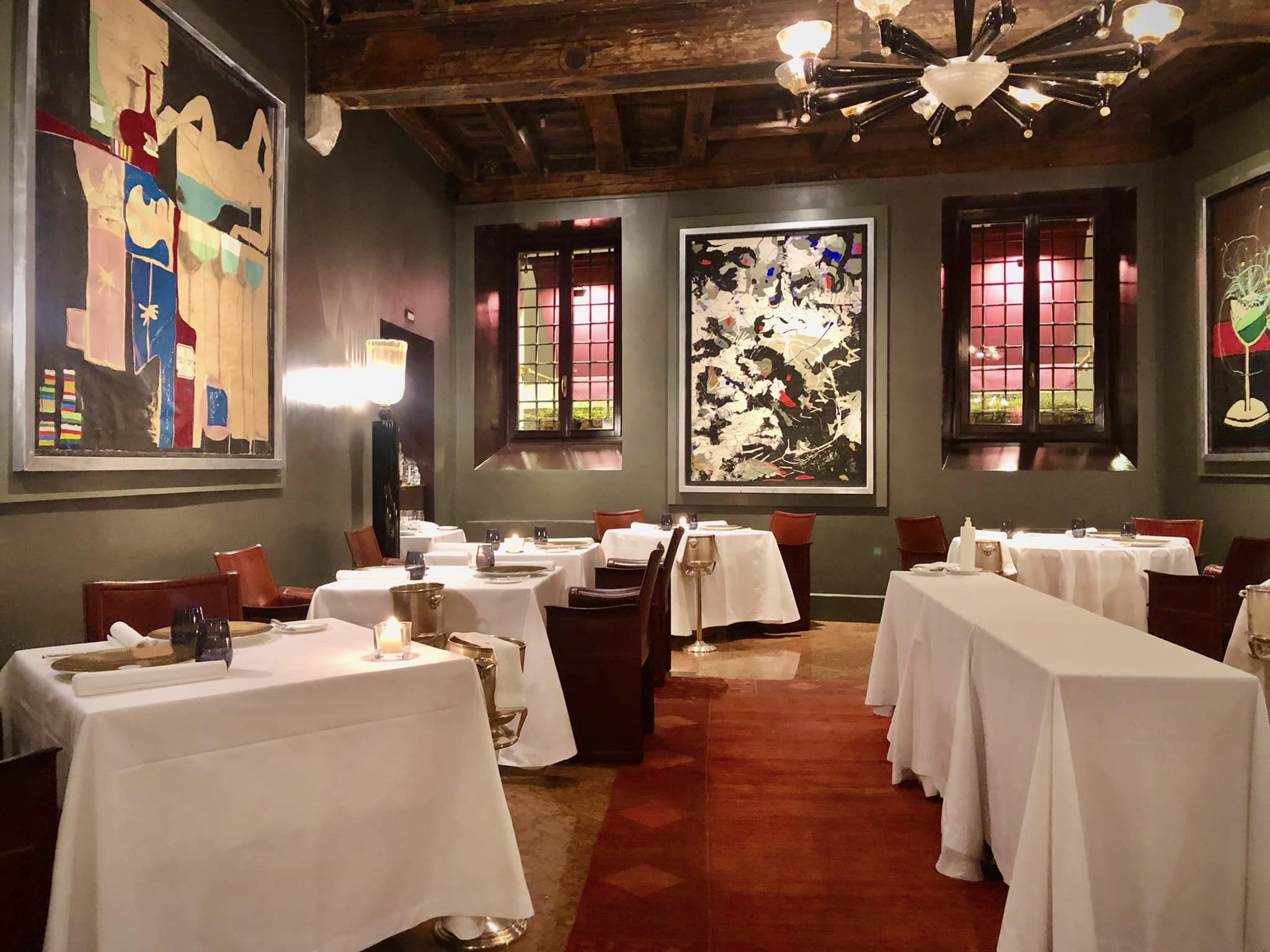
This small wine cave restaurant was recommended by our apartment host. It was also one of the few restaurants open on a Monday. We really enjoyed the ambiance of this restaurant. The local wine was excellent and the scallop starter was delicious!
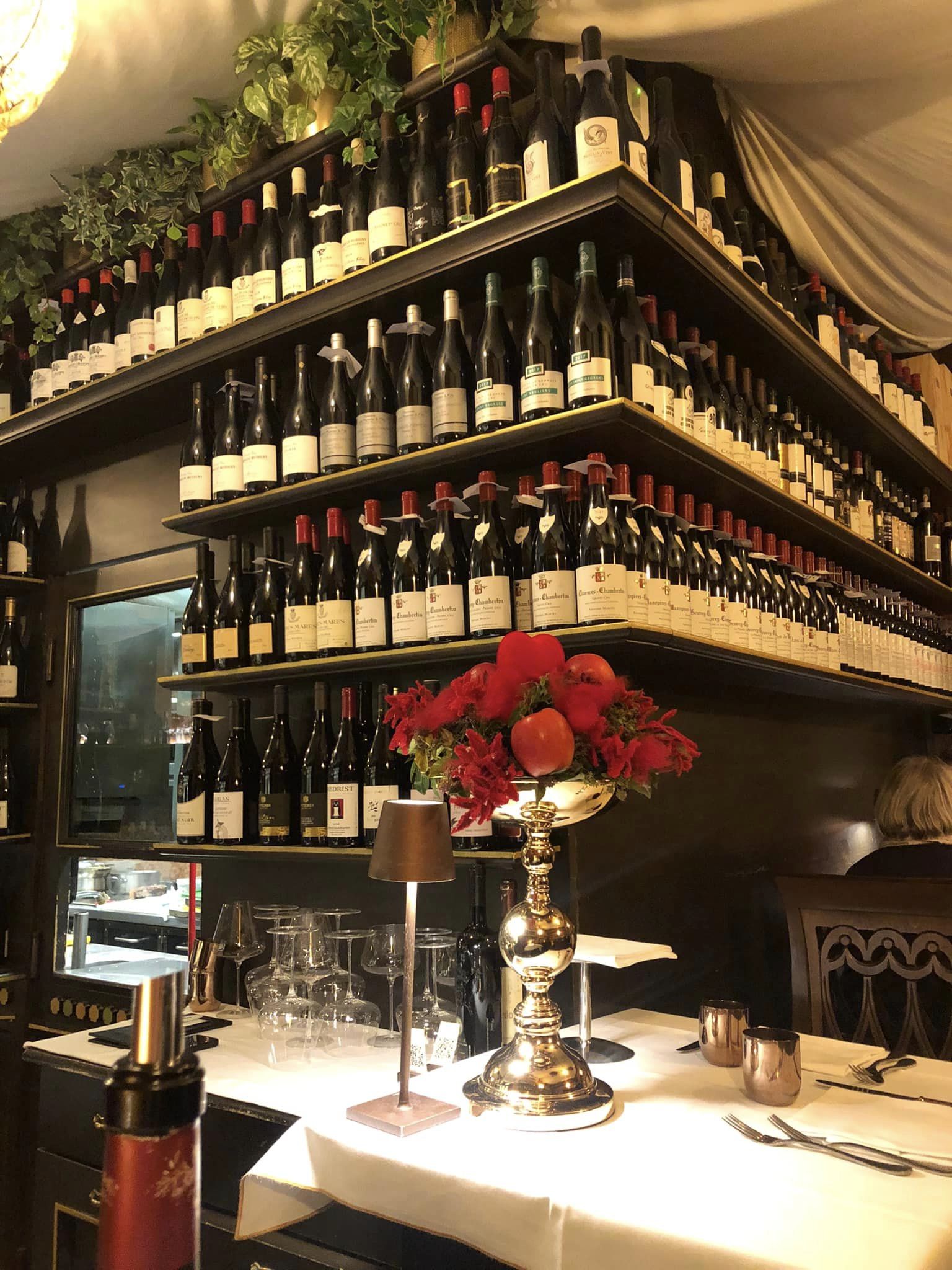

Tips and Links
Verona Card
This was the best advice I took when researching Verona. I bought our 48-hour passes online (on the GetYourGuide website) and it was well worth the 20 Euro cost (per person). We took advantage of all the free entrances we could get with the card. We even got to skip the long line at the Verona Arena.
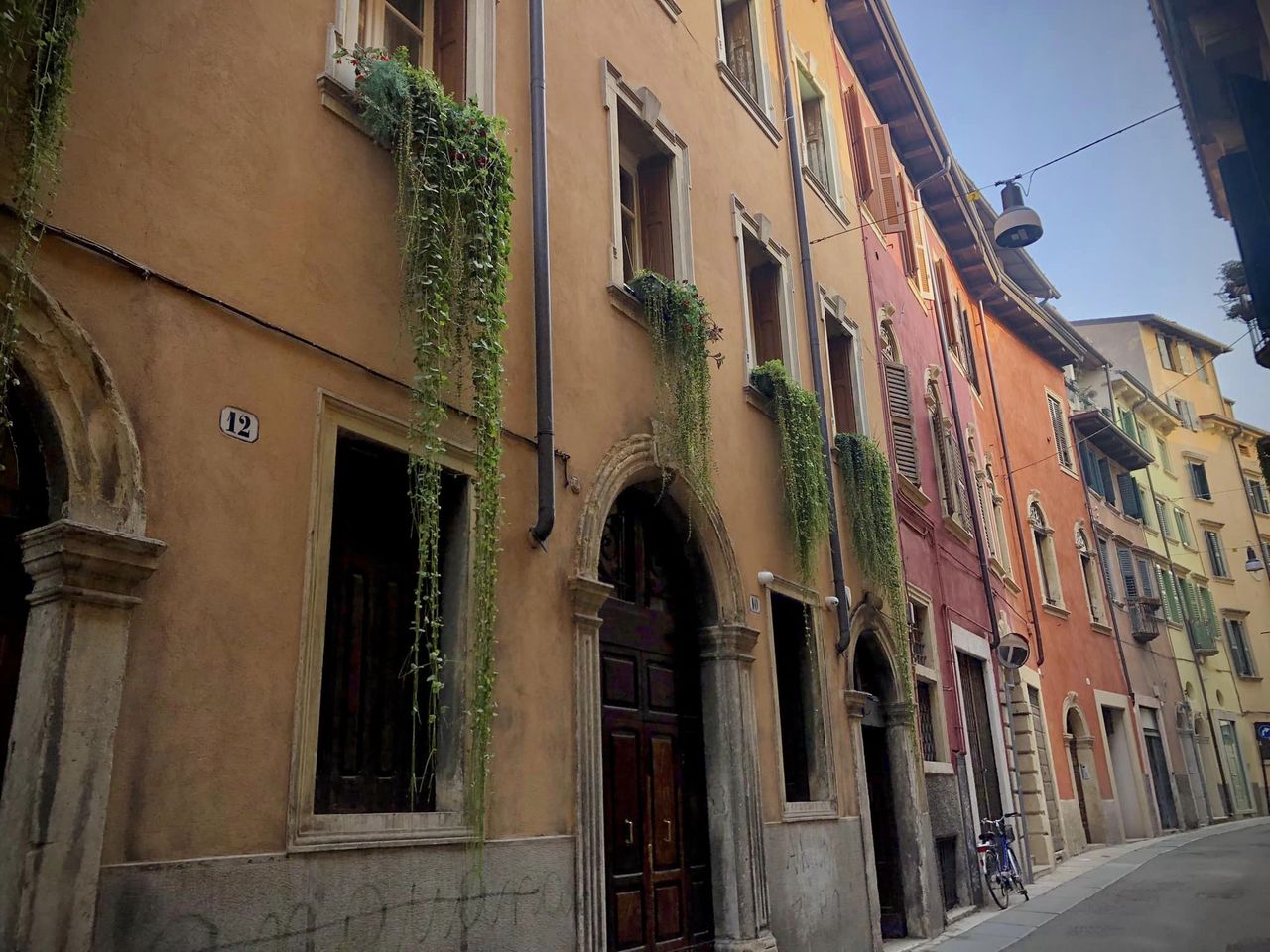
Walk through the backstreets
You will experience the real feel of Verona by getting off the main streets and walking through the small backstreets. You can avoid the tourists and see how the locals live.
Book an apartment close to the center
We stayed in a great place very close to the center of town by the river. It was very practical to walk from there and return in the afternoon before going out for dinner. Our apartment was a quaint 3rd-floor apartment in a typical style building. You can see our Casa Angie accommodation here.
Have a free snack with drinks
Everywhere we went, they served us snack food when we ordered drinks. I thought it was great that they do this. Pick a spot in one of the piazzas to enjoy the outdoors and watch the people go by.
Summary
I hope you’ve enjoyed learning about the highlights of this magical place and how to see Verona Italy in Two Days! I loved experiencing this Italian city. If you’re looking for another great city in Italy, check out my post ‘2 Day Itinerary for Bologna Italy‘.
If you are looking for assistance to plan your next trip, I am here for YOU! I love to plan travel itineraries for myself and others. For more details on how I provide this service, please check out my Itinerary Planning page and drop me a quick email at jan@janadventures.com to get started!



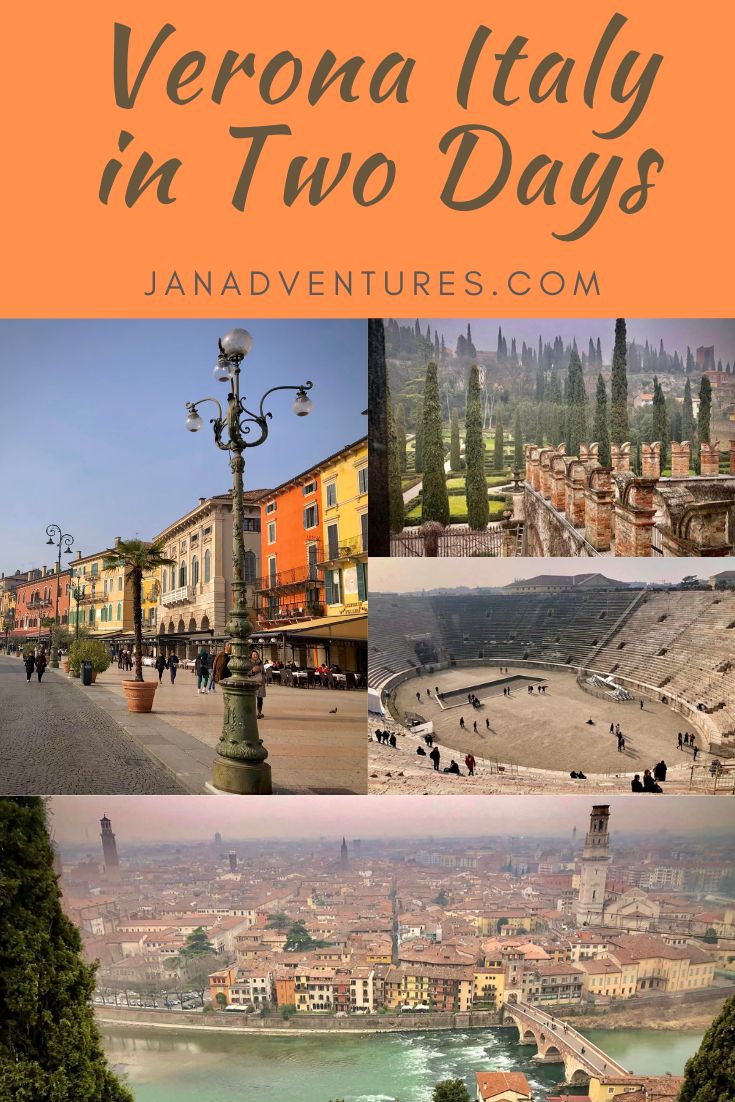
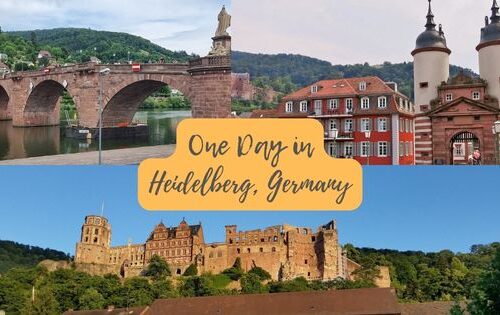
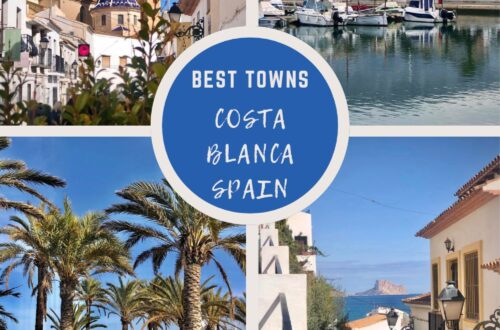
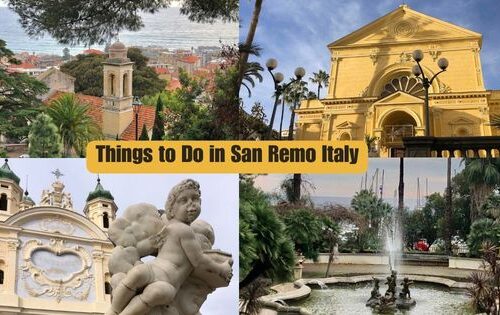
2 Comments
Literally Laurie
Such a beautiful place. What a great trip.
Jan
Yes it is and yes it was!